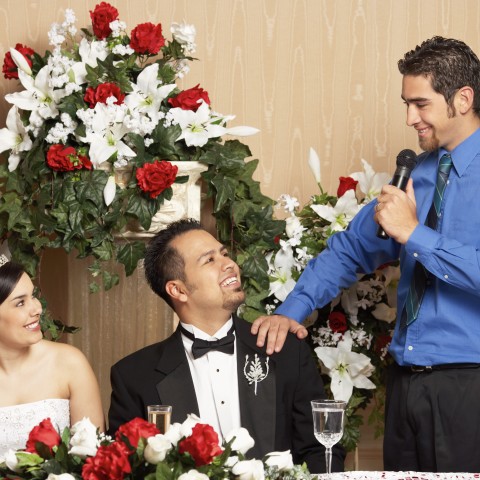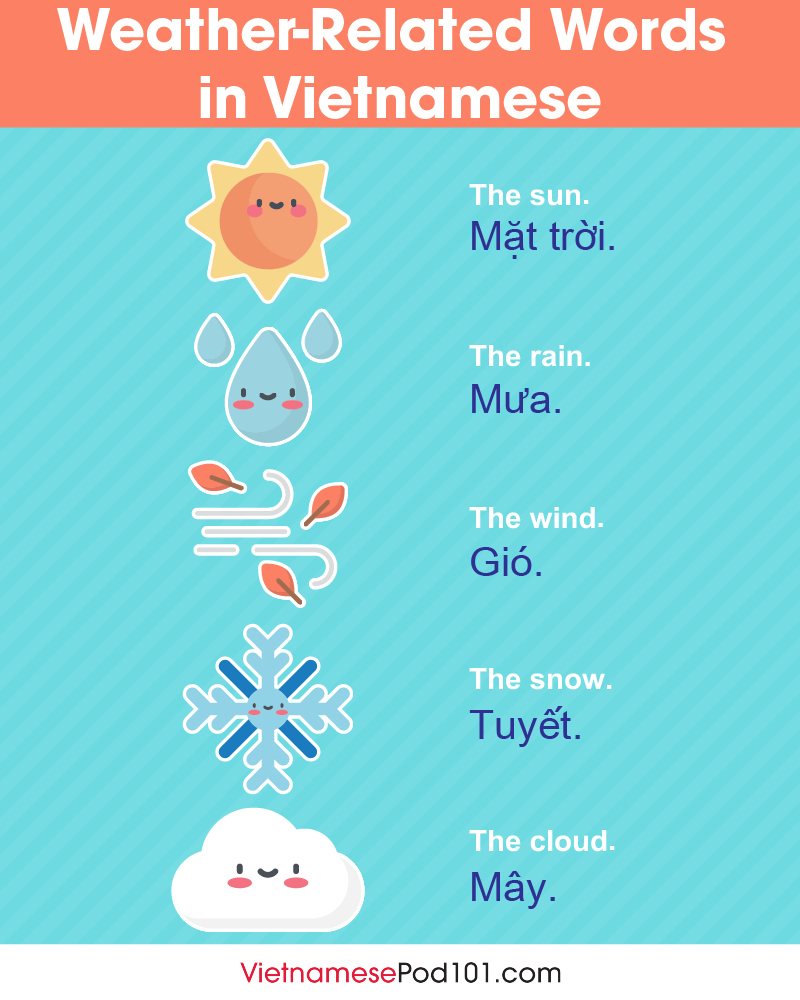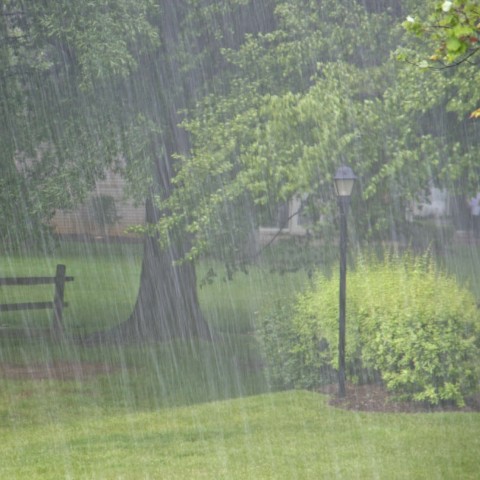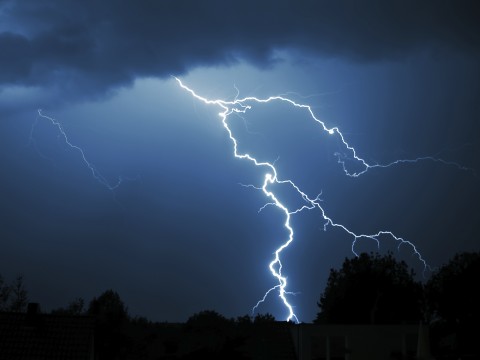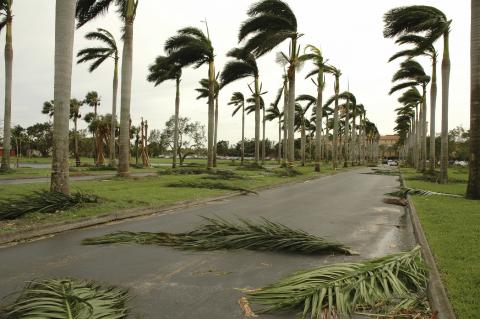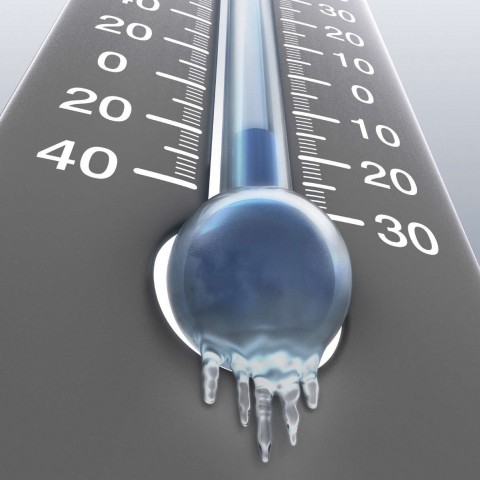
Most countries have a national anthem with which to express the pride of their country, to convey in it the cultural and historical stories of a nation, to be played on sacred or official occasions, and to represent the noble ideals that all people in the same country aspire to. Most national anthems of countries are public property according to the law. For example, when the American national anthem is performed or recorded during a broadcast of the National Football League (NFL), the NFL will own the reproduction, publishing, and performance rights to this particular show.
Meanwhile, Singapore law stipulates that the national anthem can only be sung or performed on appropriate occasions. Individuals performing or singing the national anthem must perform or sing in accordance with the original or remix that meets strict melody and lyrics requirements.
So, what is a national anthem song?
A national anthem is a song that expresses patriotism, evokes, and celebrates the history, traditions, and struggles of the people of that country, recognized by the government of a country as the official national anthem or widely used by people as a custom.
Whenever there is a flag-raising ceremony at a conference or a sports match between Vietnam and another country, I find that not many national anthems have the same heroic and tragic melody as the Vietnam national anthem, which explains why some consider Vietnam’s national anthem – Tien Quan Ca, by musician Van Cao – one of the most heroic national anthems in the world.
 Table of Contents
Table of Contents
- The first Vietnamese anthem
- Tiến quân ca (The Marching Song Lyric)
- Hoàn cảnh sáng tác Tiến quân ca (the Circumstances of Composing Tien Quan Ca)
- Những dịp hát quốc ca Việt Nam (Singing Occasions for the Vietnamese Anthem)
- Conclusion
1. The first Vietnamese anthem
What is the national anthem of Vietnam?
According to Nguyen Ngoc Huy – a politician of the Republic of Vietnam and a Vietnamese poet and writer – Emperor Bao Dai came down to the stage to select a national flag and anthem during the Second World War. The Vietnamese flag was the Cờ long tinh and the national Vietnamese anthem was the song Đăng đàn cung ( [melody] on the ascent to the esplanade).

Đăng đàn cung is an ancient Vietnamese song and is still used in most of the textbooks teaching classical music and traditional instruments. This is a song from the ritual of Nam Giao sacrifice, used when the king comes to the altar to sacrifice animals and valuable sundries. The Nam Giao sacrifice ceremony, performed every 3 years on the winter solstice, was the most important ceremony in the court’s rites, where the king would make sacrifices on behalf of the nation.
In 1942 in Hanoi, musician Le Huu Muc recorded music and put other lyrics to Đăng đàn cung and called it Vietnam’s national anthem, naming it Tiếng gọi non sông (The Call of the River), also known as Hồn Việt Nam (Vietnamese soul). It was considered by some to be the national anthem, but little was known in the Central region.
| Lời bài hát : Tiếng gọi non sông | The Call of the River Lyric |
| Bên núi sông hùng vĩ trời Nam Đã bao đời vết anh hùng chưa hề tan Vì đâu máu ai ghi ngàn thu? Còn tỏ tường bên núi sông Xác thân tan tành Vì nước quên mình | The majestic mountains and rivers in the South sky For many generations, the traces of heroes have not disappeared Why does people’s blood write for thousands of years? And clearly on the side of the mountain and river Broken body Forgets ourselves for the country |
2. Tiến quân ca (The Marching Song Lyric)
“Tiến quân ca” is a song composed by musician Van Cao in 1944 and has been used as the national anthem of the Socialist Republic of Vietnam since 1976. Before that, “Tiến quân ca” was the national anthem song of the Democratic Republic of Vietnam from 1945 to 1976. Since its birth, the song has been considered the official song of the Viet Minh Front. During the August Revolution of 1945, instead of “Vietnamese troops go,” Viet Minh participants often sang “Viet Minh troops go.” When officially chosen as the Vietnamese national anthem, the lyrics of the national anthem of Vietnam were modified in some ways compared to the original “Tiến quân ca” by Van Cao.
| Vietnam national anthem lyrics in Vietnamese | Vietnam national anthem in English |
| Đoàn quân Việt Nam đi Chung lòng cứu quốc Bước chân dồn vang trên đường gập ghềnh xa Cờ in máu chiến thắng mang hồn nước Súng ngoài xa chen khúc quân hành ca Đường vinh quang xây xác quân thù Thắng gian lao cùng nhau lập chiến khu Vì nhân dân chiến đấu không ngừng Tiến mau ra sa trường Tiến lên, cùng tiến lên Nước non Việt Nam ta vững bền | Soldiers of Vietnam marching onward United in determination to save the nation Our steps resound on the long and arduous road Our flag, red with the blood of victory, bears the spirit of the country The distant rumbling of guns mingles with our marching song The path to glory is built by the bodies of our foes Overcoming all hardships, together we build our resistance bases Let us swear to fight relentlessly for the people’s cause. Let us run to the battlefield! Forward! All together, let’s go forward! The Vietnamese homeland is strong and durable |
| Đoàn quân Việt Nam đi Sao vàng phấp phớiDắt giống nòi quê hương qua nơi lầm than Cùng chung sức phấn đấu xây đời mới Đứng đều lên gông xích ta đập tan Từ bao lâu ta nuốt căm hờn Quyết hy sinh đời ta tươi thắm hơn Vì nhân dân chiến đấu không ngừng Tiến mau ra sa trường Tiến lên! Cùng tiến lên! Nước non Việt Nam ta vững bền | Soldiers of Vietnam marching onward The gold star in the wind Leading our people and our homeland out of misery and suffering Let us unite our efforts in the struggle for building a new life Stand up! With the same impetus, let’s break our irons! For so long we have contained our hatred! Let us be ready to make every sacrifice so that our life may be radiant Let us swear to fight relentlessly for the people’s cause. Let us run to the battlefield! Forward! All together, let’s go forward! The Vietnamese homeland is strong and durable |
3. Hoàn cảnh sáng tác Tiến quân ca (the Circumstances of Composing Tien Quan Ca)
In the 21-year-old Van Cao’s memoirs “Why I wrote Tiến quân ca,” he confided: “The song was made in an unknown number of days in the narrow attic number 45 Nguyen Thuong Hien Street, next to a window overlooking a 2-story house, rows of trees and a gray sky. It often echoes bullock carts carrying bodies of starving people towards Kham Thien Street here. Also, I was sleepless because of the monsoon entering each door, because of the sound of fighting and swearing at each other from a family of poor, undernourished civil servants, echoing through the gaps in the open attic. I understand more life stories here. There are knocks on the door, night calls are unanswered at night.”
After the song was written, Van Cao met and sang it to Mr. Vu Quy, a friend and member of the Viet Minh. Mr. Quy was very pleased. He assigned Van Cao to write the song himself on the printed stone. Because the scribe couldn’t write musical notes, Van Cao had to go directly to a secret printing facility in Bat Trang village to write and print the song “Tiến quân ca” by hand. For the first time, “Tiến quân ca” was printed on the Art page of Doc Lap newspaper in November 1944 with a stone print written by Van Cao himself. Writer Nguyen Dinh Thi, when listening to Van Cao singing this song, was touched and proposed that each of them write another song about the Viet Minh Front. After that, writer Nguyen Dinh Thi wrote the song Diệt phát xít (Destroying the fascists) and Van Cao added the song Chiến sĩ Việt Nam (Vietnamese soldiers), both of which were widely popularized by the public.
- On August 13, 1945, President Ho Chi Minh officially approved “Tiến quân ca” as the national anthem of the Democratic Republic of Vietnam.
- On August 17, 1945, during a meeting of the people of Hanoi in front of the Opera House, the song “Tiến quân ca” was played.
- Also at the Opera House Square, on August 19, 1945, there was the choir of the Young Pioneers singing the song “Tiến quân ca” to salute the national flag during a large meeting.
- On September 2, 1945, “Tiến quân ca” was officially performed on the day of the Declaration of Independence at Ba Dinh Square by the Liberation Army Band led by Dinh Ngoc Lien.
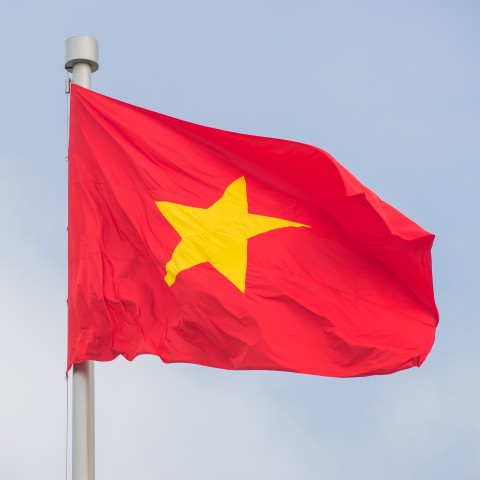
4. Những dịp hát quốc ca Việt Nam (Singing Occasions for the Vietnamese Anthem)
The Vietnamese national anthem, produced by Minh Quan
The national anthem of the Socialist Republic of Vietnam includes the music and lyrics of the song “Tiến quân ca” is often used in flag-raising ceremonies at state offices, schools, political ceremonies of the country, mass organizations, national festivals, or state and national sports events. Quốc thiều is the music of the song “Tiến quân ca/Quốc ca” (Vietnamese anthem song), and is used in flag raising ceremonies, welcome ceremonies for heads of state, state-level ceremonies, and more.
5. Conclusion
No matter what version, Tiến quân ca as the Vietnam national anthem still has a heroic and tragic melody that no one can deny. Learning Vietnamese through songs and movies will not only give you a chance to learn the language but also about our country with a rich history.
If you want to try other Vietnamese cultural lessons, visit VietnamesePod101 for more audio files, flashcards, free lessons, and vocabulary lists to master your Vietnamese today. To improve pronunciation, go to our VietnamesePod101 Youtube Channel for video lessons and free gifts every week.
Want to tell us about your national anthem? Leave a comment below.
Bai!

Everyday Vietnamese Classroom Phrases and Vocabulary

Learning languages starts from lessons in the classroom to traveling, working and living, or learning from the cultures of the country. No matter what strategy of learning, most people find studying from the basics plays an important role in building a sustainable foundation.
When I first studied English, I was also adopting common classroom phrases to understand teachers’ commands. Most of them are actually quite helpful in my actual classes where I later on became a teacher.
If you’re a student learning Vietnamese language, you’re going back to school, or you’re new here and want to improve Vietnamese language learning, I’m here for you. I’m going to share with you several lists of lexicon and Vietnamese classroom words and phrases that you will absolutely use at some point.
First, let’s discover the Vietnamese education system through vocabulary about schools.
 Table of Contents
Table of Contents
- School vocabulary (Từ vựng về trường học)
- School departments Vocabulary (Từ vựng về các phòng ban trong trường)
- Vocabulary about positions in a school (Từ vựng về các vị trí trong trường học)
- Classroom Greetings (Chào hỏi trong lớp)
- Instructions from Teachers
- Teacher’s common teaching techniques
- Student’s common questions/requests
- Explain Absence and Tardiness
- Common questions for students
1. School vocabulary (Từ vựng về trường học)

The Vietnamese education system is not very complicated since we only have a few typical levels of learning and it’s consistent across the country. Public schools’ tuition fees are often more affordable than international or private schools. Here are the most particular school types in Vietnam that you might have heard of to learn vietnamese language.
- Trường dân lập (Private school) : Private schools teaching quality is often slightly lower than public schools due to high costs but low investment and support from the government. However, some families prefer sending their children to private schools for their suitable locations or lower student numbers.
- Trường công lập (Public school) : Public schools are often the most sought after because of their moderate tuition fees and guaranteed teaching quality.
- Trường quốc tế (International school) : There are not many international schools in Vietnam because of the high cost but entering might be easier because it’s for people who can afford the tuition fee.
- Nhà trẻ (Daycare/ Child care center) : Nhà trẻ is for kids between 1-2 years old, some even accept kids from 6-9 months old. Most of them are private establishments because official schools start from preschool which is for kids from 3-5 years old. For some families who don’t have anyone to take care of young kids, they would prefer sending them to local daycares during working hours.
- Trường mầm non/trường mẫu giáo (Preschool) : Trường mẫu giáo accepts students from 3 to 5 years old. Most of the lessons contain games, sing and dance activities and learning numbers or alphabets to prepare for primary school.
- Trường tiểu học/Trường cấp 1 (Elementary school) : Elementary schools are for students from 6 – 10 years old which means there are 5 grades, from grade 1 to grade 5. Most elementary schools don’t require entrance tests but depending on the admissions target of each school, students on the right line will be given priority to enroll first.
- Trường Trung học phổ thông/Trường cấp 2 (Middle school/ Secondary school) : Middle school/ Secondary schools are for students from 11 to 14 years old. They are from grade 6 to 9. Similar to elementary school, entrance tests are not required but study results from elementary school will be considered.
- Trường Trung học cơ sở/Trường cấp 3 (High school) : High school is the most important level of every student because it prepares for university and therefore, specialized schools often require students to take an entrance test. Regular schools may not do so but it takes a lot of effort for parents to choose the right school for their children due to the high demands every year.
- Trường đại học (College/ University) : A bachelor degree is very important to anyone when looking for a job in Vietnam and therefore, entering college/ university is the highest target set for students after 12 years studying at school. The high school graduation exam is used to determine the score for university admission, so this exam is considered extremely important for every student. College/ University usually takes 4 years for general subjects and 5 to 6 years or even more for majors such as medicine and pharmacy.
- Trường cao đẳng (Undergraduate) : If university entrance requirements are often high, undergraduate in Vietnam are a little bit easier to enroll because of lower standards. Undergraduate usually takes 2-3 years.
- Tại chức (Service education/ Service learning) : Service education/ service learning schools are at a lower level than undergraduate or university. It often requires at least 2 years to finish but the degree is not very valuable.
2. School departments Vocabulary (Từ vựng về các phòng ban trong trường)
Technically, these departments are the most common ones in every school in Vietnam. Depending on the specialized disciplines, the departments may differ. Let’s take a look at some vocabulary about school departments in order to prepare for the useful classroom phrases for students and teachers in Vietnamese that I’m going to share with you in the upcoming parts.
- Phòng Học thuật/Phòng Học vụ (Academic Department)
- Phòng Hiệu trưởng (Principal’s office)
- Phòng Hiệu phó (Vice-Principal’s office)
- Phòng y tế ( Nurse’s office)
- Phòng truyền thống (Hall of Fame)
- Văn phòng Đoàn (The youth union room)
- Phòng thí nghiệm (Laboratory)
- Thư viện (Library)
- Giảng đường (Lecture hall)
- Ký túc xá (Hall of resident)
- Phòng bảo vệ (Security section)
- Khu vực gửi xe (Parking space)
- Căng tin (Cafeteria)
- Sân chơi (Playground)

If you’re new to a school and want to ask for directions, here is the sentence structure.
- To friends :
Bạn ơi, làm ơn cho mình hỏi + place + ở đâu? (Hey, may I ask where the + place + is please?)
- To more senior people:
Anh/chị ơi, làm ơn cho em hỏi + place + ở đâu? (Hey, may I ask where the + place + is please?)
- To teachers (if you think they are)
Thưa thầy/cô, làm ơn cho em hỏi + place + ở đâu ạ? (Hey, may I ask where the + place + is please?)
For examples :
- Bạn ơi, làm ơn cho mình hỏi phòng y tế ở đâu? (May I ask where the nurse’s office is please?)
- Chị ơi, làm ơn cho em hỏi thư viện ở đâu? (May I ask where the library is please?)
- Thưa cô, làm ơn cho em hỏi phòng truyền thống ở đâu ạ? (May I ask where the hall of fame is please?)
3. Vocabulary about positions in a school (Từ vựng về các vị trí trong trường học)
Beside your classmates, there will be some positions that you must know when studying at school, for instance:
- Giáo viên (Teacher)
- Giảng viên (Lecturer)
- Trợ giảng (Teaching assistant)
- Giáo viên chủ nhiệm (Head teacher)
- Hiệu phó (Vice-principal)
- Hiệu trưởng (Principal)
- Giáo viên bộ môn (Subject teacher)
- Học sinh (Pupil)
- Sinh viên (Student)
- Bí thư (Secretary)
- Lớp trưởng (Monitor)
- Lớp phó (Vice monitor)
- Bảo vệ (Guard)
- Tạp vụ/Lao công (Janitor)
- Giám thị (Supervisor)
- Nhân viên y tế (Medical officer)
To introduce someone, you can say:
- – Đây là lớp trưởng của lớp tôi (This is my class monitor)
– Kia là giáo viên chủ nhiệm của tôi (That is my head teacher)

4. Classroom Greetings (Chào hỏi trong lớp)
Moving to the main part of the lesson, you wil see that most sentences can be use in Vietnamese reading and writing also. First, let’s explore several basic Vietnamese words and phrases for greeting at school.
- First, let’s see how students greet teachers in Vietnam.
- ➜ Em chào thầy (Hello teacher – For male teacher)
➜ Em chào cô (Hello teacher – For female teacher)
➜ Em chào các thầy ((Hello teacher – For male teachers)
➜ Em chào các cô (Hello teacher – For female teachers)
- ➜ Con chào thầy (Hello teacher – For male teacher)
➜ Con chào cô (Hello teacher – For female teacher)
➜ Con chào các thầy ((Hello teacher – For male teachers)
➜ Con chào các cô (Hello teacher – For female teachers)
Why using this : it sounds closer
Note : it’s more common for young students such as preschoolers or primary students.
- Next, here are ways for teachers to respond to students.
- ➜ Chào em (For old student)
➜ Chào con (For preschooler)
➜ Chào các em (For old students)
➜ Chào các con (For young students)
➜ Cô/Thầy chào các con (For students in general)
➜ Cô/Thầy chào các em (For students in general)
➜ Tôi chào các em (More formal)
- To know how students greet each other, take a look at our video on our Youtube channel How to say Hello or our free article lesson How to say Hello for more details.
5. Instructions from Teachers
You must have noticed somewhere that you can either use “Các em” or “Cả lớp” as “you all” when giving imperatives. In any classroom in the world, there will be different instructions or requirements from teachers for each class. If you are teaching, here are the easiest and most common Vietnamese classroom phrases for teachers that you can use on a daily basis:
- ➜ Các em mở sách trang … (Open your book to page…)
➜ Các em trật tự (Be quiet)
➜ Cả lớp tập trung (Focus)
➜ Bây giờ cô sẽ kiểm tra bài cũ (I’m gonna check the previous lesson now)
➜ Bạn nào chưa làm bài giơ tay (Who hasn’t done your homework please raise your hand)
➜ Hết giờ, cả lớp nộp bài (Time’s up, please submit your assignments)
➜ Hôm nay chúng ta sẽ học về (Today, we’re going to learn …)
➜ Bây giờ chúng ta sẽ làm bài theo nhóm (Now we will work in group)
➜ Cả lớp làm bài tập số ... (Do the exercise number …)
6. Teacher’s common teaching techniques
In some cases, there are some questions to check students’ understanding in a test or at the end of the lesson, or useful classroom phrases in Vietnamese that teachers can apply as teaching techniques.
- To check understanding
- ➜ Câu này là đúng hay sai? (This is correct or incorrect?)
➜ Có ai có câu hỏi gì không? (Does anyone have any questions?)
➜ Các bạn đã nghe rõ đề bài chưa? (Have you heard the title clearly?)
➜ Các bạn đã hiểu rõ đề bài chưa? (Have you understood the title clearly?)
- Correction techniques
- ➜ Có bạn nào có câu trả lời không? (Does anyone have the answers?)
➜ Có bạn nào có đáp án khác không? (Does anyone have another answer?)
➜ Em có chắc không? (Are you sure?)
➜ Có bạn nào có thể giúp bạn được không? (Can anyone help your friend?)
➜ Đây có phải đáp án cuối cùng của em không? (Is this your finalanswer?)
7. Student’s common questions/requests
Education 4.0 encourages students to interact with teachers and their peers anytime in the class for more effectiveness. With teachers who are well trained and equipped with 4.0 teaching methodologies, allowing students to have some free talks in the class is essential to keep students engaged.
Therefore, there are various Vietnamese classroom phrases for students in the classroom:
- For entering the classroom:
- ➜ Thưa cô, cho con vào lớp ạ (Teacher, may I come in the class please?)
➜ Thưa cô, cho em vào lớp ạ (Teacher, may I come in the class please?)
- For better clarity:
- ➜ Thưa cô, con chưa nghe rõ ạ (Teacher, I haven’t heard clearly)
➜ Con có thắc mắc ạ (I have a question)
➜ Em có câu hỏi ạ (I have a question)
➜ Em chưa rõ phần này ạ (I’m not sure about this part yet)
➜ Cô có thể giải thích phần này không ạ? (Can you explain this part?)
➜ Cô có thể nói lại phần này không ạ? (Can you repeat this part?)
➜ Cô chữa bài này được không ạ? (Can you correct this exercise?)
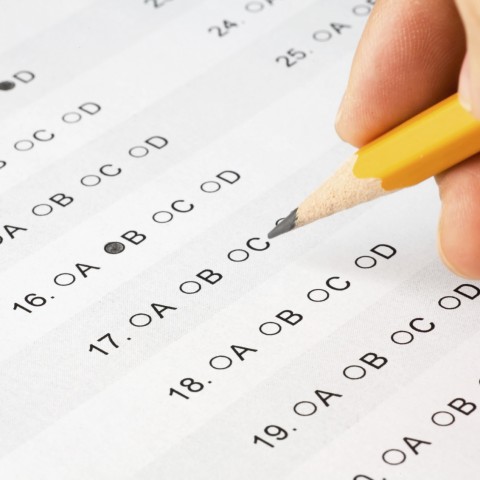
- For adding ideas/comments
- ➜ Con có ý kiến ạ (I have a comment)
➜ Em muốn bổ sung thêm (I’d like to add in some idea)
- For leaving the classroom
- ➜ Thưa cô, cho con ra ngoài ạ (Teacher, may I go out please?)
➜ Thưa cô, đến giờ nghỉ rồi ạ (Teachers, it’s break time)
8. Explain Absence and Tardiness

Everyone would be late or play hooky once in their lives. I’m not an exception.
Let me spill the beans. It was in my highschool. My parents and other students’ were asked to meet my head teacher because the whole class skipped school to hang out the day before.
I had a really good relationship with a fabric shop owner who I’m her regular customer at that time. Because of the parents meeting, I asked her to play as my mom and go meet my teacher.
She agreed!
The day later, she went to my school, acting really cool and apologizing to my teacher as other parents would do. I couldn’t thank her enough.
Break time is over. Let’s get back to the lesson and see what Vietnamese classroom phrases for students that can be used when explaining absence or tardiness.
- ➜ Thưa cô, con bị hỏng xe ạ (My bike is broken)
➜ Thưa cô, con ngủ quên ạ (I overslept)
➜ Thưa cô, hôm nay nhà con có việc, con xin phép nghỉ ạ (I have a family matter to attend today, I would like to take a day off)
➜ Thưa cô, hôm nay con thấy không được khoẻ ạ (I’m not feeling well today)
9. Common questions for students
Last but not least, before checking some useful classroom questions for students, let’s take a look at several words that you can use for the sentence structures afterwards.
- Cái bảng đen (Blackboard)
- Quyển sách (Book)
- Cái ghế tựa (Chair)
- Bàn học sinh (Desk)
- Cái bàn (Table)
- Khăn lau bảng (Duster)
- Cục tẩy (Eraser)
- Quả địa cầu (Globe)
- Sổ ghi chép (Notebook)
- Gọt bút chì (Pencil sharpener)
- Thước kẻ (Ruler)
- Cái bút (Pen)
- Bút chì (Pencil)
- Hộp bút (Pencil Case)
- Sách điện tử (Electric book)
Sentence structure
| Lend me a + thing For example : Mày ơi, cho tao mượn cái bút (Hey you, lend me a pen) |
For example:
- ➜ Cho tao mượn cục tẩy (Lend me an eraser)
- ➜ Cho tao mượn cái thước kẻ (Lend me a ruler)
Other questions:
- ➜ Mày làm bài tập về nhà chưa? (Have you done the homework?)
- ➜ Câu 2 là gì? (What’s the answer for number 2?)
- ➜ Đến nhanh lên, cô chuẩn bị điểm danh (Come quickly, teacher is about to check attendance)
- ➜ em>Mày không đi học à? (You’re not coming?)
- ➜ Mày đưa tao về được không? (Can you give me a ride?)
That’s pretty much for today and I hope it helps.
I’d like to share a little bit more about school etiquettes in another article in the near future.
Although English can be spoken if you’re lucky enough, knowing some basic Vietnamese phrases will help you be more engaged and interact with locals better.Thus, it’s alway worth it to surprise Vietnamese people or your teacher on Vietnamese Teachers’ Day.
For more FREE flashcards, vocabulary lists or audio files if you’re trying to learn Vietnamese language successfully, visit our website VietnamesePod101 and Youtube Channel Learn Vietnamese with VietnamesePod101.com. You can get your free lifetime account for real lessons by real teachers.
Bai!

Vietnamese Vocabulary and Phrases To Use at a Restaurant

Even body language works well when ordering food in Vietnam. Whether it’s a food cart, a street food shop, or a fancy restaurant, basic body language can help you communicate with the seller.
Learning how to speak properly at a restaurant in Vietnam, on the other hand, requires a little bit more effort. You may want to know some useful phrases to use as well as common etiquette in Vietnamese restaurants, especially when you’re not sure what and how to order or they don’t speak English.
Vietnam, fortunately, is an amazing country in terms of food and cooking styles. There are countless types of food throughout the country, and therefore, restaurant types also vary accordingly. In this article, I’m going to introduce to you different Vietnamese restaurant styles, useful vocabulary, numerous Vietnamese phrases to use at a restaurant, and other things you will definitely use as travel guides in Vietnam.
 Table of Contents
Table of Contents
- Các kiểu quán ăn ở Việt Nam (Different Vietnamese restaurant styles)
- Từ vựng về nhà hàng (Restaurant vocabulary)
- Before Dining (Trước khi ăn)
- During Dining (Trong khi ăn)
- After Dining (Sau khi ăn)
- Conclusion
1. Các kiểu quán ăn ở Việt Nam (Different Vietnamese restaurant styles)
A- Đồ ăn đường phố (Street food)
Street food is everywhere in Vietnam, such as Hoi An, Da Nang, Hue, Hochiminh City, Hanoi or Hai Phong. Since street food is super affordable, street food shops, therefore, don’t have a specific style because it all depends on the type of food or the culture of the owner’s family. Lots of street food stalls selling heirloom foods passed down from their grandparents. Hence, it creates a very unique style for each dish that they serve.
Examples (Ví dụ) :
- Hải Phòng rất nổi tiếng với món bánh mì que (Hai Phong is very famous for its breadstick)
- Phở là một món ăn đường phố nổi tiếng ở Việt Nam (Pho is famous street food in Vietnam)
- Mì Quảng là món ăn đặc sản đặc trưng của Đà Nẵng (Quang noodle is a typical specialty dish of Da Nang)
Despite the variety and style, street food is very affordable and can be easily found everywhere. A dish can often cost only 5000 VND, which is less than a dollar. As long as you have from $1 to $3 on hand, you can have a full meal when exploring street food in Vietnam, and it’s one of the things that make Vietnam special.
B- Quán ăn vỉa hè (Sidewalk Eatery)
Food shops on the sidewalk are quite similar to street food shops or stalls in terms of price and style. The main difference is that you have a table and a chair to sit on and it’s very common for most locals since it’s suitable for the living costs.
While street food shops usually serve 1 dish only, food shops on the sidewalk have more choices for you to go with. For example, if you go to a snail shop, there will be plenty of different dishes.
Examples (Ví dụ) :
- Các quán ốc vỉa hè có rất nhiều trong Sài Gòn (There are many sidewalk snail shops in Saigon)
- Đi ăn vặt vỉa hè là một thú vui của người Việt Nam (Snacking on the sidewalk is a hobby of Vietnamese people)
C- Quán ăn/tiệm ăn bình dân (Affordable food shop)
An affordable food shop is a little bit more upscale than a food shop on the sidewalk because there might be staff members to serve you and the service will be better also. Here you can also find more kinds of food from noodles to rice, from chicken to seafood. Many shops serve both Vietnamese food and Western food cooked in Vietnamese style to suit Vietnamese people’s tastes. The price is around $3 – $5, and the portion is also bigger than street food. This kind of shop is suitable for families, a group of friends, or coworkers, and it’s usually busy on weekends. Most of them don’t require a reservation, and you can come anytime.
D- Nhà hàng (Restaurant)
A restaurant is the fanciest type among the four, and it’s usually suitable when you go out on a date, celebrate anniversaries, or organize company events.

In Vietnam, Chinese restaurants, Japanese restaurants, Thai restaurants, and Korean restaurants are probably the most common ones because they’re close to Vietnamese cuisine. In contrast, Western fast food is served in restaurants in Vietnam, but it doesn’t seem to attract Vietnamese people a lot since it contains more fat compared to Vietnamese food, and it’s also more expensive.
Restaurants often don’t require reservations on weekdays but might do on weekends and public holidays due to the high demands. A dish usually costs $5-10, not including 10% tax, but there is no service charge and you can give waiters or waitresses whatever you wish.
2. Từ vựng về nhà hàng (Restaurant vocabulary)
Learning the Vietnamese language is similar to learning Lao or Thai because of the way we put the words together in a sentence.
Before moving to common restaurant phrases, here are some useful vocabulary that you will definitely use at a restaurant in Vietnam.
A- Danh từ (Noun)
- Đồ ăn (Food)
- Đồ uống (Drink)
- Đồ nhậu (Snack for drinking)
- Đồ ăn kèm (Side dish)
- Rau sống (Raw vegetables)
- Món khai vị (Appetizer)
- Món chính (Main dish)
- Món tráng miệng (Dessert)
- Thực đơn (Menu)
- Hoá đơn (Bill)
- Bàn (Table)
- Ghế (Chair)
- Đặt bàn (Reservation)
- Nhân viên phục vụ (Waiter/waitress)
- Khách (Customer)
B- Động từ (Verb)
- Đặt bàn (To make a reservation)
- Đi ăn (To go eating)
- Gọi món (To order)
- Ăn (To eat)
- Uống (To drink)
- Phục vụ (To serve)
- Dọn bàn (To clean the table)
- Thanh toán (To pay)
- Chờ (To wait)
C- Tính từ (adjective)
- Ngon (Good/Delicious)
- Không ngon (Not good/bad)
- Dở tệ (Terrible)
- Nhạt (Bland)
- Mặn (Salty)
- Nhiều dầu (Oily/greasy)
- Khô (Dry)
- Đặc (Thick)
- Loãng (Thin)
- Nhanh (Quick,fast)
- Chậm (Slow)
- Ồn ào (Noisy)
- Đông đúc (Crowded)
- Vắng vẻ/yên tĩnh (Empty/Quiet)
3. Before Dining (Trước khi ăn)
As mentioned above, you don’t need to make a reservation before going to a restaurant in Vietnam unless it’s on weekends or public holidays.
In case you need to make a phone call for a reservation, here is one of the basic Vietnamese phrases to say:
| Cấutrúc (Structure) | Cho (Let/allow) | Chủ ngữ (Subject) | đặt bàn (make a reservation/book) | thời gian (time) |
| Vídụ (Example) | Cho (Let/allow) | tôi (me) | đặt bàn (to book/to reserve a table) | lúc 8h tối nay (at 8PM today) |
Ví dụ:
- Cho tôi đặt bàn lúc 11h trưa nay (I would like to book a table at 11AM today)
- Cho anh đặt bàn ngày mai (I would like to book a table tomorrow)
Besides, there will be some extra questions to make it more specific, here’s how you can respond to those:
- Anh/chị đặt bàn mấy người (How many people will there be?)
Tôi đặt bàn 2 người (I’m booking for 2 people)
- Anh chị có yêu cầu gì đặc biệt không (Do you have any special requests?)
Tôi muốn + yêu cầu (I’d like + request)
Ví dụ: Tôi muốn bàn gần cửa sổ (I’d like a table near the windows.)
- Anh chị có muốn gọi món trước không (Would you like to order in advance?)
Không/Có (No/Yes)
- Anh chị vui lòng gửi xe ở (Please park your vehicle at …) – If the restaurant doesn’t have a parking lot
Anh chị vui lòng tới đúng giờ. Nhà hàng hỗ trợ giữ bàn trong 30 phút (Please arrive on time. We could keep the table for 30 minutes.)
For some reason, you have to cancel the plan. Here’s how you can do so:
- Tôi muốn huỷ đặt bàn hôm nay (I’d like to cancel my reservation today)
Bàn đặt của tôi dưới tên Linh (My reservation is under Linh’s name)
4. During Dining (Trong khi ăn)
This is the main part where you will communicate with the staff directly at the restaurant, from getting their attention to giving feedback after the meal. The sentence structures that I’m going to list down right now are basically the simplest to practice. Let’s get right into them.
A- Getting the waiter’s attention

To call someone coming to your table, the easiest way is to say:
- Em ơi/Anh ơi/Chị ơi
Calling the waiter is not considered rude in Vietnam. Is it on the other hand quite common and easy to get their attention. In case you feel like the restaurant ambiance is a little bit private or quiet, there are several other ways such as:
- Vẫy tay (Wave hand)
- Bấm chuông (Push the bell)
- Giao tiếp bằng mắt (Eye contact)
B- Asking about the menu
- Cho tôi mượn menu (May I have the menu please)
- Ở đây có món gì? (What do you have here?) – In case the food shop doesn’t have a menu
- Em có thể giới thiệu món nào ngon được không? (Can you recommend a few good dishes/ your signature?)
C- Asking about specific things
When coming to a new place that you haven’t been to before, there might be something that you find confused or just simply want to make sure you’re not allergic to. These are a few questions you can ask:
- Món này có cay không? (Is it spicy?)
- Món này cho 2 người có đủ không em? (Is it good for 2 people?)
- Món này không bỏ hành được không? Tôi không ăn được hành (Can you not put onion in this dish? I don’t eat onions)
- Em ơi chị có bàn đặt tên Linh, bạn chị đến chưa? (I have a table under “Linh” name, has my friend come yet?)

D- Ordering
Using the same structure when making a reservation, here is what you can use for ordering food in Vietnam.
| Cấu trúc (Structure) | Cho (Give) | Chủ ngữ (Subject) | số lượng (quantity) | món ăn (dish) |
| Ví dụ (Example) | Cho (Give) | tôi (me) | 2 (two) | phở bò (beef noodle) |
Remember that in this case, “cho” means “give” instead of “allow” or “let” as the one mentioned above although it sounds the same.
Ví dụ:
- Cho chị 2 suất bún chả (Give me 2 portions of bún chả please)
- Cho anh 1 pizza bò (Give me 1 beef pizza please)
E- Asking for utensils
- Cho tôi 1 đôi đũa (Give me a pair of chopsticks please)
- Cho tôi 1 cái thìa (Give me a spoon please)
F- Asking where the bathroom is
- Em ơi, toilet ở đâu? (Where is the bathroom/restroom?)
- Em ơi, chỗ rửa tay ở đâu? (Where can I wash my hands?)
G- Making complaints

- Em ơi, món này mặn quá (This dish is too salty)
- Em ơi, món này không đúng yêu cầu của chị (This dish is not what/ how I wanted it to be)
- Em ơi, chị không gọi món này (I didn’t order this)
- Món này hơi nhạt và nguội (This dish is a bit bland and cold)
- Thịt bò của chị hơi tái, chị muốn chín hơn một chút (My beef is a bit too raw, I want it to be a little more cooked)
H- Giving feedback
At some high-class restaurants, there will be someone coming to ask for feedback after the meal. What they might say is:
- Anh chị thấy đồ ăn hôm nay thế nào? (How do you like the food today?)
And this is how you can say:
- Đồ ăn rất ngon, cảm ơn em (The food is really good, thank you)
- Đồ ăn rất vừa miệng (The food is very tasty)
- Phục vụ hôm nay hơi chậm nhưng đồ ăn rất ngon (Service is a bit slow today but the food is delicious)
5. After Dining (Sau khi ăn)
A- Asking for the bill
- Em ơi, tính tiền cho chị/anh (Please charge me)
- Em ơi, thanh toán cho chị/anh (May I pay please)
B- Payment method
There are options for you to choose whether to pay by cash, credit card or transfer the money directly to the owner. Here is what they will ask:
- Anh chị thanh toán bằng thẻ hay bằng tiền mặt? (Would you like to pay by card or cash?)
And you can say:
- Tôi trả thẻ (I’d like to pay by card)
- Tôi trả tiền (I’d like to pay by cash)
- Tôi muốn chuyển khoản (I’d like to transfer money)
C- Asking for a take away
In case you couldn’t finish the meal and still have a lot on the table, you can ask the waiter to pack the food for you by saying:
- Em ơi, gói giúp chị cái này mang về với (Help me pack this for takeaway, please)
- Em ơi, chị muốn đặt 1 phần mang về (I’d like to order a takeaway)
D- Tipping etiquette
Tipping is not quite common in Vietnam yet because the staff members get paid monthly with or without your tip. Tipping is sometimes even awkward when the restaurant culture doesn’t require it or the staff members are shy to take it.
At regular food shops, the most common way to thank the owner or the staff members is to leave some change from the bill. If you really enjoyed the meal and want to show some appreciation to the waiter or waitress who has done their job well, you can leave some tip on the table before you leave. In that way, it will be comfortable for both. Also, if you want to directly give it to the waiter/waitress, here are several Vietnamese phrases you can use:
- Em có thể giữ lại tiền thừa (You can keep the change)
- Còn lại là của em (The remaining is yours)
6. Conclusion
Exploring the cuisine is one of the most interesting things when traveling to Vietnam or any country. Knowing some basic restaurant phrases to use at the right time is gonna be extremely helpful especially when you want to learn more about the cultures through communicating with locals.
At VietnamesePod101, we will provide you with more basic Vietnamese phrases, vocabulary lists, flashcards and audio files to help you be more confident when learning Vietnamese. Get access to your free lifetime account right now and get your real lessons by real teachers.
Speaking of which, I suddenly feel hungry. Maybe I should go get something to eat right now. I hope you enjoyed reading and see you in the next one.

Vietnamese Conversation Starters for Deeper Connections

Why keep saying “Xin chào” to Vietnamese native speakers when there are countless ways to start a conversation? Strangers are everywhere no matter if you’re at a party, on the first day at work, or on a first date. Starting a conversation can be scary sometimes, especially with introverts and Vietnamese people. It sounds weird but true. Vietnamese native speakers tend to be shy and less active when talking to new people.
However, no need to bother whether you’re an absolute beginner or an intermediate, in the Vietnamese language learning framework, Vietnamese conversation starters can be easier to apply than you thought.
Needless to say that choosing the right personal pronoun to address people is a must in Vietnamese language learning. Interestingly, Vietnamese native speakers start talking by guessing how old the other person is so that they can call them properly. This shows the diversity of the Vietnamese language compared to others. More importantly, using the right tone is useful in this case to help you avoid awkwardness. Don’t panic! We have the list of conversation starters in Vietnamese language learning broken down by the 4 most common situations where you can comfortably start a conversation without hesitance. Ready? Keep reading!
 Table of Contents
Table of Contents
- You’re Single and Ready to Mingle!
- Conversation Starters for Socializing
- Conversation Starters for First Day at Work
- Conversation Starters to Reconnect with a Friend through Text or Email
- Conclusion
1. You’re Single and Ready to Mingle!

The truth is, talking about yourself too much on the first date is considered impolite in Vietnam sometimes. Instead, Vietnamese native speakers preferred to be listened to and received compliments. Then what to ask on the first date without being rude when learning Vietnamese? Here are some examples for your Vietnamese speaking exercises:
- Công việc của em/anh thế nào? (How’s your job?/What’s your job like?)
Asking about someone’s work is one of the safest Vietnamese conversation topics when starting a conversation in Vietnam. We all spend 8 hours per day working. Thus, no need to worry at all when asking “Công việc của em/anh thế nào?” because it’s quite comfortable to share some typical things at the office that we do every day.
Another version for it when learning Vietnamese can be :
- Bình thường ở công ty công việc chính của em/anh là gì? (Normally what are your main duties at the company?)
Once the person is willing to share about their job, he/she will probably want to talk about more personal Vietnamese conversation topics such as family. The next opening questions could be:
- Gia đình em/anh như thế nào? (How is your family?/What is your family like?)
- Em/Anh kể về gia đình anh/em đi (Tell me about your family)
- Em/anh có anh chị em gì không? (Do you have any siblings?)
- Anh/chị em/anh làm gì? (What does your brother/sister do?)
The technique here is to ask questions that end with “thế nào” (how) or “gì”(what) so that the person has a chance to talk more than just saying Yes or No. Forget about “Em tên là gì” (What’s your name?) or “Em bao nhiêu tuổi” (How old are you?). They’re boring. Instead, get to the point, and you’ll be surprised that it works better than traditional ways of Vietnamese language learning. Cooking can also be a nice Vietnamese conversation topic to talk to Vietnamese women about, who doesn’t enjoy eating and cooking?

Now, bear in mind that compliments always work. But how do you make your compliments sound sincere and less fake? Take a look at this one when learning Vietnamese:
- Em dùng nước hoa gì vậy, anh thích mùi này (What perfume are you wearing? I like this scent)
Vietnamese native speakers would love to hear that someone likes their scent, no matter if they’re wearing cologne or not. Please note that a nice scent can come from clothes, hair, or oil also. Showing that you care about little things is a great way to show affection towards the person, especially for women. No matter where you are or who you’re talking to, starting a conversation with a compliment is always the best. Don’t forget to practice your Vietnamese speaking exercises with this kind of sentence.
Men, on the other hand, are slightly different. Things like watches, shirts, or shoes are ways for them to show their style. Therefore, a simple compliment can make their day:
- Anh đeo đồng hồ hợp lắm (You look good wearing a watch)
Once a Vietnamese man wears a watch, he loves watches, and nothing sounds better than knowing his style is appreciated. Your conversation can start smoother than ever. Note that when learning Vietnamese!
Other examples that will also work:
- Em mặc váy trông rất hợp (Dresses suit you a lot)
- Em có đôi mắt rất đẹp (You have very beautiful eyes)
- Công việc của anh thú vị ghê (Your job sounds very interesting)
What not to say on the first date
We’re not done yet. You don’t want to sound rude on the first date by talking about Vietnamese conversation-sensitive topics. Here are a few things that you may want to avoid when learning Vietnamese. In case the date is already a disaster, this happens to be helpful for you to get out of it.
- Lương của em một tháng được bao nhiêu? (How much is your salary?)
A guy asked me on our first date how much I made per month when we were at the cinema. Apparently, I’ve never seen him ever since. It’s not about the question, it’s about the intention of wanting to know how much a woman makes on the first meeting. It would make more sense if it was the tenth date. Nevertheless, asking about someone’s financial status is not a good idea at all if you don’t want to ruin your conversation.
- Em có biết tại sao Việt Nam lại có cả thủ tướng và chủ tịch nước không? (Do you know why Vietnam has both a prime minister and a president?)
Talking about politics is not that bad if the person is familiar with it. In case he or she is not a big fan of politics, your conversation can be boring, and it will come to an end. Furthermore, changing the topic can be tricky at this point. Therefore, try to avoid politics unless you clearly know your partner is interested.
- Em yêu mấy người rồi? (How many guys were you in a relationship with?)
This is a disaster. Personal relationship status is a big deal in Vietnam. Even if someone is comfortable sharing it, it’s a terrible idea to ask such a question on the first date. There is a rumor that Vietnamese girls usually say three when being asked this question. Wondering why? Two is a bit too little, and four is a little too many. Three, therefore, is a suitable number. God knows how many they actually dated.
- Không trang điểm trông em xin hơn đấy (You look better without makeup)
When you’re dating already, this means a lot to Vietnamese women because not everyone knows how to do makeup. Saying she looks better without makeup is highly appreciated because you’re saying she’s naturally beautiful. HOWEVER, saying that someone looks better without makeup on the first date in Vietnam indicates that she looks terrible with her makeup on, which is very rude to say to be honest. Now you know why! Again, remember not to use this type of sentence in your Vietnamese speaking exercises.
Relax! Let’s move on to the second situation, where I’ll show you detailed steps from the beginning to the end of a conversation in Vietnamese language learning.
2. Conversation Starters for Socializing

When learning Vietnamese, these 5 steps are typical techniques to connect with someone for the first time, whether you’re at a party, a social event, or even at a club. Remember that follow-up questions are highly recommended to extend the conversation and have more ideas for the next Vietnamese conversation topics. The good news is that slang terms can be used in this case to impress people. Now, let’s start with the very first step of Vietnamese language learning – Greetings, the basic one.
Step 1: Greetings
- Chào em/Chào anh (Hi)
- Anh tên là/Em tên là (I’m [name])
Instead of saying Xin chào (Hello), Chào anh/em sounds closer and friendlier. In addition, using Anh – Em is a great way to start a conversation because it’s common to address each other Anh – Em in a relationship. You have just shortened the distance by using 2 simple words.
Also, greeting does not mean you have to say “Hi” all the time. Remember the “get to the point” technique above? Here are some examples:
- Hôm nay nhạc chơi hay nhỉ (The music today is nice, isn’t it?) – At a club or a party
- Đồ uống ở đây pha ngon (Drinks are made well here)
- Em đi với bạn hay đi một mình (Do you come with friends or you’re here alone?)
Step 2: Asking for more information
- Em/anh đến đây lâu chưa?(How long have you been here?)
- Em/anh học/làm ở đâu? (Where do you study/work?)
- Em/anh có hay đến đây chơi không? (Do you often hang out here?)
Step 3: Asking about common hobbies
- Lúc rảnh anh/em thích làm gì? (What do you like to do in your free time?)
- Em/anh thích ăn gì? (What do you like to eat/what’s your favorite food?)
- Em/anh có thích … không? (Do you like + examples?)
Step 4: Making an appointment using Let’s structure in Vietnamese.
- Tuần sau em/anh có rảnh không? (Are you free next week?), đi xem phim đi (let’s go watch movies)
- Hôm nào em/anh rảnh? (When are you available?)
- Anh có thể mời em đi uống cà phê được không? (May I invite you out for coffee sometime?)
Step 5: Asking for contact
- Em/anh có dùng Zalo không? (Do you use Zalo?)
- Em có dùng + [mạng xã hội] không? (Do you use any + [social network])?
Besides, knowing basic etiquette in Vietnam will also get you on the way to becoming more familiar with anyone you talk to for the first time when learning Vietnamese. It shows how much you care about the cultures as well as the people and this is an exact approach. Don’t forget to practice your Vietnamese speaking exercises with this kind of sentence.
3. Conversation Starters for First Day at Work

On the other hand, talking at work requires higher techniques in some other situations when learning Vietnamese. Asking too many questions on the first day at work might be considered bad manners or a sign of inexperience in Vietnam. Instead, making smart questions and spending time to self-study before asking is a good way to remember things and get to know the job. Instead of asking only, people can make requests, and use How or multiple-choice questions when learning Vietnamese. Details are as follows:
Example 1: Asking where something is by making requests
- Anh chỉ giúp em phòng Marketing với ạ (Please show me the Marketing Department)
- Chị đi cùng em lên phòng điều hành nhé (Please go with me to the Operations Department)
- Phòng Kế toán ở tầng 3 hay tầng 4 ý nhỉ (Is the Accounting Department on the 3rd or 4th floor?)
- Anh share giúp em thư mục … nhé (Please share with me the … folder)
Example 2: Making How questions
- Bình thường anh lưu trữ tài liệu thế nào ạ? (How do you often store documents?)
- Quy trình xin hoá đơn bên công ty mình như thế nào ạ? (What is the process of applying for invoicing in our company like?)
- Chị lên lịch dự án như thế nào ạ? (How do you schedule projects?)
Example 3: Using multiple choice questions by asking for specific cultures
- Mọi người hay mang cơm hay là ra ngoài ăn trưa? (Do you usually bring food or go out for lunch?)
- Ngày nghỉ mọi người thường hay đi ăn hay tối hay là đi cà phê? (Do you usually go out for dinner or drink coffee on your days off?)
- Phòng mình có hay uống trà sữa không? (Do you often drink milk tea?)
Another technique that might help when starting conversations when learning Vietnamese is to show interest by using exclamations. Remember that the little things matter, especially for conversation starters in Vietnamese.
Besides, do you know that Vietnamese native speakers are religious sometimes? Knowing someone’s age and the 12 Zodiac animals is an interesting tool. We’ll have a bunch of things to talk about the 12 Zodiac animals in another blog.
4. Conversation Starters to Reconnect with a Friend through Text or Email
Starting a conversation after a long time with someone can be awkward. Vietnamese native speakers sometimes call very old friends to invite them to their wedding or even… borrow money. How to start a conversation in this case without reluctance for both? These are some common questions in Vietnamese language learning to reconnect with someone you haven’t seen for a while.

Common questions :
- Khoẻ không? (Are you doing well?)
- Dạo này thế nào rồi (How have you been doing lately?)
- Có gì mới không (Anything new?)
- Công việc dạo này thế nào rồi? (How has your work been?)
- Sắp tới có dự định gì không? (Do you have any plans in the near future?)
Here are some extra questions if you want to be more specific
- Em bé dạo này ngoan không? (Is the baby good these days?)
- Công việc của ông xã thế nào rồi? (How is your husband’s work)
- Ba mẹ bạn khoẻ không? (Are your parents doing okay?)
5. Conclusion
Once you both could feel the vibe, it is easier to move on to another Vietnamese conversation topic. Think of all the common things you’ve had together and naturally share your thoughts or reasons for why you haven’t connected for a while. Most people you have a good relationship with will also quickly get involved in the conversations.
Mindful conversation starters are best for deepening relationships and encouraging meaningful talks, whether with newcomers, family members, or friends. What are some of your favorite questions to ask or answer? Share them in the comment below and visit VietnamesePod101.com for more learning materials.

Telling Time in Vietnamese – Everything You Need to Know

What’s your relationship with the clock like? Does it run your day from a morning alarm to a cut-off chime for bed, or are you more of a go-with-the-flow type, letting your mood and emotions decide how much you fall in line with time?
Understanding time in Vietnamese is an important part of your studies. As humans, our lives are filled with habits and schedules. From waking up and going to work or gym, to missing rush hour traffic on our way home, we’re always aware of time. We have routines around coffee breaks, meetings, soccer games and vacations. In fact, time can seem rather capricious – going slowly, going fast, sometimes against us, other times on our side – like a force that has a life of its own.
In science, time is often referred to as a fourth dimension and many physicists and philosophers think that if we understood the physics of the universe, we would see that time is an illusion. We sense an ‘arrow’ or direction of time because we have memories, but really time is just a construct that humans have created to help make sense of the world.
On the other hand, poets through the ages have written impassioned thoughts about time, depicting it as both a relentless thief and an immensely precious resource, not to be wasted at any cost.
Well, poets and scientists may have their views, but in our everyday lives there’s the question of practicality, isn’t there? I mean, if you have plans and want things to happen your way, there’s a certain amount of conforming to the human rules of time that you can’t avoid.
In ‘The Little Prince’ by Antoine de Saint-Exupéry, the prince has a rose that he falls in love with, and he tenderly protects it with a windscreen and places it under a glass dome on his tiny planet. I love this quote from the book: “It is the time you have wasted for your rose that makes your rose so important.” If we truly love something, we spend time with it and not a second of that time could ever be seen as wasted. I feel that way about horses, my children, travel and learning languages.
With that in mind, I’d like to take you on a journey into ‘time’ from a Vietnamese perspective. It’s fun, it’s informative and it’s a basic necessity if you’re learning the language – especially if you plan to travel. VietnamesePod101 has all the vocab you need to fall in love with telling time in Vietnamese, and not a minute will be wasted.
 Table of Contents
Table of Contents
1. Talking about Time in Vietnamese
As a traveler, your primary need for knowing how to read the hour in Vietnamese will be for transportation schedules: the bus, train, airplane, ferry, taxi… whatever you plan to use to get from A to B, it won’t wait for you! Fortunately, it’s really not complicated. You already have a firm grasp of time in English and you know you’ll need to reset your watch and phone to the local time. Great – that means you’ll have the correct time on your person.
We’re so used to just looking at our phones for the time, that it’s easy to take this convenience for granted and forget some travel basics: in a foreign country, times won’t always be written digitally. If you see the time written in words, it’ll be the same challenge to you as hearing it spoken: you’ll need to be familiar with the language.
You may be surprised at how often ‘time’ comes into conversation. Learning the Vietnamese terms for time will help you when you have to call a taxi, ask about opening and closing times of events and tourist attractions, restaurants and bars and even late-night food cafes.
My biggest annoyance when traveling is not being able to get coffee and amazingly, even at nice hotels this has happened more times than I care to think about. I’ll be up late planning something, writing my blog or chatting and when I go looking for coffee downstairs, I’m told the kitchen is closed or the ‘coffee lady’ has gone to sleep. Frustrating!
If you’re doing a homestay or at a youth hostel or backpackers, there will probably also be a limited timeframe for when you can grab dinner. Do you know how to ask when it’s time to eat in Vietnamese? I’ve learned that it’s vital to know how to make my queries clearly understood to accommodation staff and for me to clearly understand their answers. Perfect your ‘time in Vietnamese’ translations early on – you’ll thank me.
At VietnamesePod101, we’ve put together a comprehensive list of Vietnamese time words and phrases to get you going.
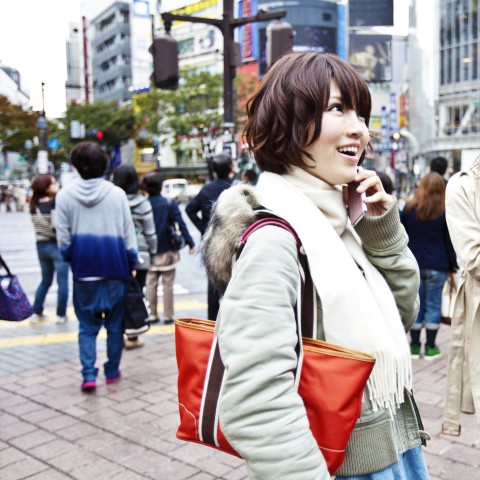
1- Morning – buổi sáng
Morning is the time when we wake up from our dreamworld, hopefully fully rested and restored; we brew the first delicious cup of coffee for the day and watch the sunrise as we prepare for another glorious twelve hours of life. No matter what happened the day before, a new morning is a chance to make everything right.
I like these quiet hours for language practice, as my mind is clear and receptive to learning new things. I start by writing the Vietnamese time, date and word of the day on my whiteboard, then get back under the covers for an engrossing lesson.
Time in the morning is written as AM or A.M., which stands for ante meridiem – meaning ‘before midday’ in Latin.

2- Evening – buổi tối
Evening is the part of night when we’re still awake and doing things, winding down from the day. Whether you enjoy a tasty international dinner with friends, go out to see a show, or curl up on the couch with a Vietnamese snack and your favorite TV series, evening is a good time to forget your worries and do something that relaxes you. If you’re checking in with your Facebook friends, say hi to us, too!
Evening is also an ideal time to catch up on your Vietnamese studies. The neighbourhood outside is likely to be quieter and time is yours, so grab a glass of wine or a delicious local tea, and see what’s new on your Mac App or Kindle.
3- Daytime – ban ngày
Daytime is defined as the period from early morning to early evening when the sun is visible outside. In other words: from sunrise to sunset. Where you are in the world, as well as the season, will determine how many daylight hours you get.
Interestingly, in locations north of the Arctic Circle and south of the Antarctic Circle, in summertime the sun does not sink below the horizon within a 24-hour period, bringing the natural phenomenon of the midnight sun. You could only experience this in the north, though, because there aren’t any permanent human settlements south of the Antarctic Circle.
4- Nighttime – đêm
Nighttime is all the hours from sunset to sunrise and depending on where in the country you are, people may be partying all night, or asleep from full-dark.
In the same northernmost and southernmost regions where you can experience a midnight sun, winter brings the opposite phenomenon: the polar night. Can you imagine a night that lasts for more than 24 hours?

5- Hour – giờ
An hour is a unit of time made up of 60 minutes and is a variable measure of one-24th of a day – also defined by geeks as 3 600 atomic seconds. Of all the ‘time’ words we use on a daily basis, the hour is the most important, as time of day is typically expressed in terms of hours.
One of the interesting methods of keeping time that people have come up with is the hourglass. Although the origins are unclear, there’s evidence pointing to the hourglass being invented around 1000 – 1100 AD and one of the ways we know this, is from hourglasses being depicted in very old murals. These days, with clocks and watches in every direction we look, they’re really only used symbolically to represent the passage of time. Still – a powerful reminder of our mortality and to seize the day. In his private journal, the Roman emperor, Marcus Aurelius, wrote: “You could leave life right now. Let that determine what you do and say and think.”

6- Minute – phút
Use this word when you want to say a more precise time and express minutes in Vietnamese. A minute is a unit of time equal to one sixtieth of an hour, or 60 seconds. A lot can happen in the next 60 seconds. For example, your blood will circulate three times through your entire vascular system and your heart will pump about 2.273 litres of blood.
7- O’clock – giờ
We use “o’clock” when there are no minutes and we’re saying the exact hour, as in “It’s two o’clock.” In Vietnamese, this is essentially the same as just saying “hour.”
The term “o’clock” is a contraction of the term “of the clock”. It comes from 15th-century references to medieval mechanical clocks. At the time, sundials were also common timekeepers. Therefore, to make clear one was referencing a clock’s time, they would say something like, “It is six of the clock” – now shortened to “six o’clock”.
We only use this term when talking about the 12 hour clock, though, not the 24 hour clock (more on that later!) The 12-hour clock can be traced back as far as Mesopotamia and ancient Egypt. Both an Egyptian sundial for daytime use and an Egyptian water clock for nighttime use were found in the tomb of Pharaoh Amenhotep I. Dating to c.1500 BC, these clocks divided their respective times of use into 12 hours each. The Romans also used a 12-hour clock. Daylight was divided into 12 equal hours and the night was divided into four watches.
These days, the internet has made it very easy to know what the time is in any part of the world. Speaking of which, why not add the Vietnamese time zone clock to your laptop?
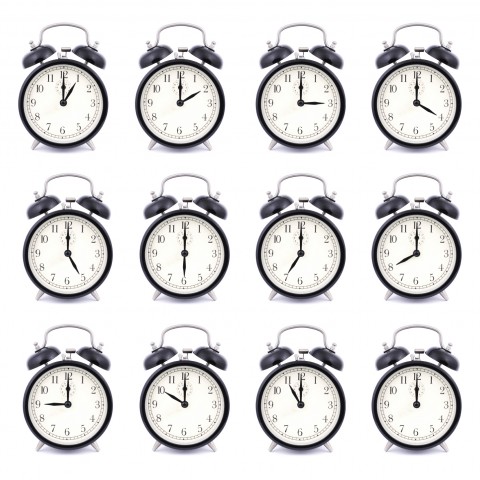
8- Half past – rưỡi
When the time is thirty minutes past the hour, in English we say “half past”. Just like the hour, the half-hour is universally used as an orientation point; some languages speak of 30 minutes before the hour (subtraction), whereas others speak of 30 minutes after the hour (addition).
9- AM – sáng
As mentioned earlier, AM is the abbreviation of the Latin ante meridiem and means before midday. Using ‘AM’ as a tag on your time simply tells people you’re speaking about a time in the morning. In some countries, morning is abbreviated to “AM” and you’ll see this on shop signs everywhere, announcing the opening hour. A typical shop sign might read something like this:
“Business hours are from 7AM to 6PM.”
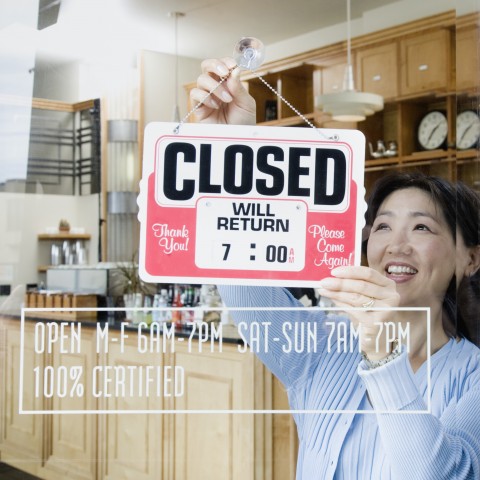
10- PM – trưa / chiều / tối
PM is the abbreviation of the Latin post meridiem and means after midday. Along with ‘AM’, you’ll usually find ‘PM’ on store signs and businesses, indicating the closing hours. It’s advisable to learn the difference between the two, since some establishments might only have one or the other on the sign. For example, a night club sign might say:
“Open from 10 PM until late.”
11- What time is it now? – Bây giờ là mấy giờ?
Here’s a very handy question you should memorize, as you can use it in any situation where you don’t have your watch or phone on you. This could be on the beach, in a club, or if you’re stuck anywhere with a flat phone battery. It happens at home, so it can happen when you’re traveling!

12- One o’clock – một giờ
One o’clock, or 1 PM, is the average lunch time for many people around the world – at least, we try to get a meal in at some point between midday and 2 PM. In terms of duration, the nations vary: Brazililans reportedly take the longest lunch breaks, averaging 48 minutes, whereas Greece reports an average break of only 19 minutes. Historically, Greeks were known for their very leisurely lunch breaks, so it just goes to show how fast the world is changing. If you’re curious about what to expect in Vietnam, try asking our online community about lunch time in Vietnamese.
13- Two o’clock – hai giờ
In his last days, Napoleon Bonaparte famously spoke of “Two o’clock in the morning courage” – meaning unprepared, spontaneous courage. He was talking about soldiers who are brave enough to tumble out of bed in an instant, straight into action, without time to think or strategize. Do you think you have what it takes? I’m pretty sure all mothers know this feeling!
14- Three o’clock – ba giờ
3 AM can be perceived as the coldest time of day and is not an hour we want to wake up, but meteorologists will tell you that the coldest time is actually half an hour after sunrise. Even though the sun is peeking over the horizon, the solar radiation is still weaker than the earth’s infrared cooling to space.
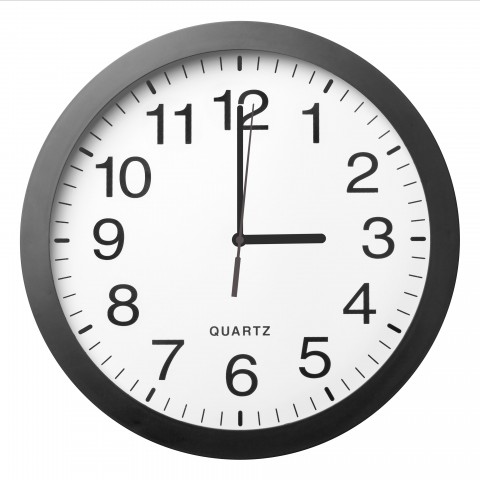
15- Four o’clock – bốn giờ
Do you know anyone who purposely gets up at 4 o’clock in the morning? As crazy as it sounds, there is something to be said for rising at 4 AM while the rest of the world sleeps. If you live on a farm, it might even be normal for you. I know that whenever I’m staying in the countryside, rising early is a lot easier, because there’s a satisfying reason to do so: watching a sunrise from a rooftop, with uninterrupted views, can’t be beat! It’s also likely that you’ll be woken by a cock crowing, or other animals waking to graze in the fresh pre-dawn air.
In the world of business, you’ll find a small group of ambitious individuals – many entrepreneurs – who swear by the 4 o’clock in the morning rise. I’m not sure I like that idea, but I’d wake up at 4 AM if it was summer and I had my car packed for a vacation!
16- Five o’clock – năm giờ
What better way to signal the transition between work and play than the clock hands striking 5 o’clock? It’s the hour most working people look forward to each day – at least, those who get to stop working at 5 PM. Meanwhile, millions of retired folks are taking out the wine glasses, as 5 PM is widely accepted as an appropriate time to pour the first glass. I don’t know how traditional your families are, but for as long as I’ve been alive, my grandparents have counted down the milliseconds to five o’clock, and the hour is announced with glee.

17- Six o’clock – sáu giờ
This is the time many working people and school kids wake up in the morning. In many parts of the world, 6 o’clock is also a good time to watch the sunrise, go for a run or hit the hiking trails.
18- Seven o’clock – bảy giờ
Health gurus will tell you that 7 o’clock in the morning is the best time to eat your first meal of the day, and 7 o’clock in the evening is the time you should eat your last meal. I’ve tried that and I agree, but it’s not always easy!
19- Eight o’clock – tám giờ
8 o’clock in the morning is the time that most businesses open around the world, and the time most kids are in their first lesson at school – still full of energy and willing to participate. Interestingly, it’s also the time most babies are born in the world! In the evening, 8 o’clock is many young children’s bedtime and the time for parents to watch the evening news.

20- Nine o’clock – chín giờ
It’s good to occasionally sleep late on a weekend and for me, this means waking up at 9 AM. If you’re traveling in Vietnam and staying at a hotel, planning to sleep late means politely requesting to not be woken up by room service.
21- Ten o’clock – mười giờ
10 o’clock in the morning is a popular time to conduct business meetings, and for first break time at schools. We’re usually wide awake and well into our day by then. But what about the same hour at night? Modern people are often still awake and watching TV at 10 PM, but this isn’t exactly good for us. Experts say that the deepest and most regenerative sleep occurs between 10 PM and 2 AM, so we should already be sound asleep by ten o’clock.
In advertising, have you ever noticed that the hands of the clock usually point to 10:10? Have a look next time you see a watch on a billboard or magazine. The reason? Aesthetics. Somehow, the human brain finds the symmetry pleasing. When the clock hands are at ten and two, they create a ‘smiley’ face and don’t cover any key details, like a logo, on the clock face.
22- Eleven o’clock – mười một giờ
When I see this time written in words, it makes me think of the hilarious Academy Award-winning very short film, “The Eleven O’Clock”, in which the delusional patient of a psychiatrist believes that he is actually the doctor.
Then there’s the tradition of ‘elevenses’ – tea time at eleven o’clock in the morning. Strongly ingrained in British culture, elevenses is typically a serving of hot tea or coffee with scones or pastries on the side. It’s a great way to stave off hunger pangs before lunch time arrives. In fact, if you were a hobbit, ‘Elevenses’ would be your third meal of the day!
23- Twelve o’clock – mười hai giờ
Twelve o’clock in the daytime is considered midday, when the sun is at its zenith and the temperature reaches its highest for that day; it’s written as 12 noon or 12 PM. In most parts of the world, though, this doesn’t happen at precisely 12 PM. ‘Solar noon’ is the time when the sun is actually at its highest point in the sky. The local or clock time of solar noon depends on the longitude and date. If it’s summertime, it’s advisable to stay in the shade during this hour – or at least wear good quality sunblock.
Midnight is the other ‘twelve o’clock’, of course. Midnight is written as 12 AM and is technically the first minute of the morning. On the 24-hour clock, midnight is written as 00:00.

2. How to Tell the Time in Vietnamese

Using a clock to read the time in Vietnam is going to be the same as in your own country, since you’re dealing with numbers and not words. You’ll know the time in your head and be able to say it in English, but will you be able to say it out loud in Vietnamese?
The first step to saying the time in Vietnamese is knowing your numbers. How are you doing with that? If you can count to twelve in Vietnamese, you’re halfway there! We’ve already covered the phrases you’ll need to say the exact hour, as in “five o’clock”, as well as how to say “half past”. What remains is the more specific phrases to describe what the minute hand is doing.
In everyday speech, it’s common to say the minutes past or before the hour. Often we round the minutes off to the nearest five.
Then, there’s the 24-hour clock. Also known as ‘military time’, the 24-hour clock is used in most countries and, as such, is useful to understand. You’ll find that even in places where the 12-hour clock is standard, certain people will speak in military time or use a combination of the two. No doubt you’ve also noticed that in written time, the 24-hour clock is commonly used. One of the most prominent places you’ll have seen this is on airport flight schedules.
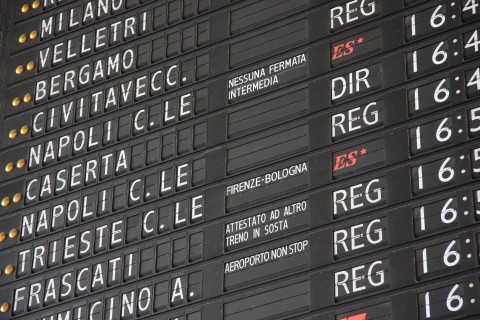
Knowing how to tell military time in Vietnamese is really not complicated if you know your numbers up to twenty-four. One advantage of using the 24-hour clock in Vietnamese, is there’s no chance of confusing AM and PM.
Once you know how to say the time, it will be pretty easy to also write the time in Vietnamese. You’re already learning what the different hours and minutes look and sound like, so give yourself some writing practice of the same.
3. Conclusion
Now that you understand the vocabulary for telling time in Vietnamese, the best thing you can do to really lock it down is to just practice saying Vietnamese time daily. Start by replacing English with Vietnamese whenever you need to say the time; in fact, do this whenever you look at your watch. Say the time to yourself in Vietnamese and it will become a habit. When learning a new language, the phrases you use habitually are the ones your brain will acquire. It feels amazing when that turning point comes!
To help yourself gain confidence, why don’t you make use of our various apps, downloadable for iPhone and iPad, as well as Android? Choose what works best for you. In addition, we have so many free resources available to supplement your learning, that you simply can’t go wrong. Some of these are:
- Free lessons on iTunes
- A free mini lesson every day with the Innovative Language Calendar.
- Free audio books for lessons on the go.
If you prefer watching your lessons on video, check out our YouTube channel – there are hundreds of videos to browse. For those of you with Roku, we also have a TV channel you can watch.
Well, it’s time for me to say goodbye and for you to practice saying the time in Vietnamese. Look at the nearest clock and try to say the exact time, down to the seconds. See you again soon at VietnamesePod101!

Essential Vocabulary for Directions in Vietnamese

Do you know your left from your right in Vietnamese? Asking for directions can mean the difference between a heavenly day on the beach and a horrible day on your feet, hot and bothered and wondering how to even get back to the hotel. Believe me – I know! On my earlier travels, I didn’t even know simple terms like ‘go straight ahead’ or ‘go west,’ and I was always too shy to ask locals for directions. It wasn’t my ego, but rather the language barrier that held me back. I’ve ended up in some pretty dodgy situations for my lack of directional word skills.
This never needs to happen! When traveling in Vietnam, you should step out in confidence, ready to work your Vietnamese magic and have a full day of exploring. It’s about knowing a few basic phrases and then tailoring them with the right directional words for each situation. Do you need to be pointed south in Vietnamese? Just ask! Believe me, people are more willing to help than you might think. It’s when you ask in English that locals might feel too uncertain to answer you. After all, they don’t want to get you lost. For this reason, it also makes sense that you learn how to understand people’s responses.
Asking directions in Vietnam is inevitable. So, learn to love it! Our job here at VietnamesePod101 is to give you the confidence you need to fully immerse and be the intrepid adventurer you are.
 Table of Contents
Table of Contents
1. Talking about position and direction in Vietnamese
Have you ever tried saying the compass directions of north, south, east and west in Vietnamese? These words are good to know, being the most natural and ancient method of finding direction. In the days before GPS – before the invention of the compass, even – knowing the cardinal directions was critical to finding the way. Certainly, if you were lost somewhere in the mountain regions now and using a map to navigate, you’d find them useful. Even more so if you and a Vietnamese friend were adrift at sea, following the stars!
In most situations, though, we rely on body relative directions – your basic up, down, left and right, forward and backwards. Most cultures use relative directions for reference and Vietnamese is no exception. Interestingly, in a few old languages there are no words for left and right and people still rely on cardinal directions every day. Can you imagine having such a compass brain?
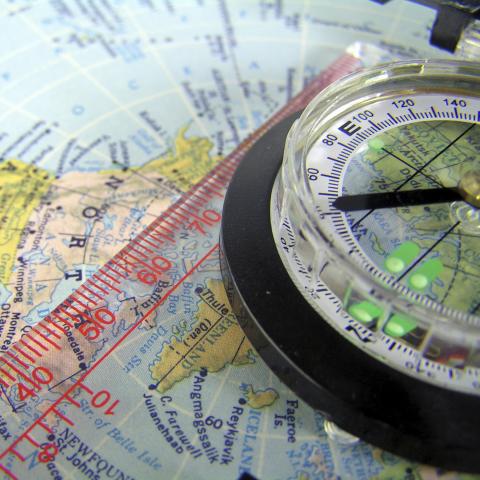
Well, scientists say that all mammals have an innate sense of direction, so getting good at finding your way is just a matter of practice. It’s pretty cool to think that we were born already pre-wired to grasp directions; the descriptive words we invented are mere labels to communicate these directions to others! Thus, the need to learn some Vietnamese positional vocabulary. So, without further ado… let’s dive in.
1- Top – đỉnh
If planting a flag at the top of the highest mountain in Vietnam is a goal you’d rather leave for adrenaline junkies, how about making it to the top of the highest building? Your view of the city will be one you’ll never forget, and you can take a selfie for Twitter with your head in the clouds.

2- Bottom – phần dưới cùng
The ‘bottom’ can refer to the lower end of a road, the foot of a mountain, or the ground floor of a building. It’s the place you head for after you’ve been to the top!
What are your favorite ‘bottoms’? I love the first rung of a ladder, the base of a huge tree or the bottom of a jungle-covered hill. What can I say? I’m a climber. Divers like the bottom of the ocean and foxes like the bottom of a hole. Since you’re learning Vietnamese, hopefully you’ll travel from the top to the bottom of Vietnam.
3- Up – lên
This is a very common and useful word to know when seeking directions. You can go up the street, up an elevator, up a cableway, up a mountain… even up into the sky in a hot air balloon. It all depends on how far up you like to be!

4- Down – xuống
What goes up, must surely come down. This is true of airplanes, flaming arrows and grasshoppers – either aeronautics or gravity will take care of that. In the case of traveling humans who don’t wish to go down at terminal velocity, it’s useful to know phrases such as, “Excuse me, where is the path leading back down this mountain?”
5- Middle – giữa
In Lord of the Rings, Tolkien’s characters live in Middle-earth, which is just an ancient word for the inhabited world of men; it referred to the physical world, as opposed to the unseen worlds above and below it. The ancients also thought of the human world as vaguely in the middle of the encircling seas.
When we talk about the ‘middle’, we’re referring to a point that’s roughly between two horizontal lines – like the middle of the road or the middle of a river. While you’re unlikely to ask for directions to the ‘middle’ of anything, you might hear it as a response. For example, “You’re looking for the castle ruins? But they’re in the middle of the forest!”

6- Center – chính giữa
Although similar in meaning to ‘middle’, this word is more specific. Technically, it means the exact central point of a circular area, equally distant from every point on the circumference. When asking for directions to the center of town, though, we don’t mean to find a mathematically-accurate pinpoint!
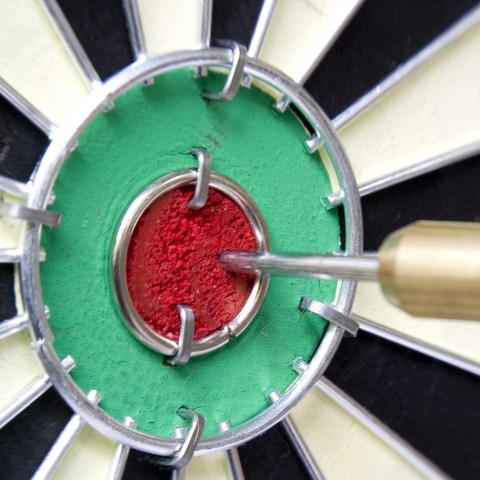
7- Front – trước
The front is the place or position that is seen first; it’s the most forward part of something. In the case of a hotel, the front is going to be easy to recognize, so if you call a taxi and are told to wait “in front of the hotel”, you won’t have a problem. It’s pretty cool how just knowing the main Vietnamese directional words can help you locate something if there’s a good landmark nearby.
8- Back – phía sau
I once rented a house in a charming little street that was tucked away at the back of a popular mall. It was so easy to find, but my boss took three hours to locate it from 300 meters away. Why? Well, because she spoke no English and I had no clue what the word for ‘back’ was. All she heard, no matter which way I said it, was “mall, mall, mall”. As a result, she hunted in front of and next to the mall until she was frazzled.
Knowing how to describe the location of your own residence is probably the first Vietnamese ‘directions’ you should practice. This skill will certainly come in handy if you’re lost and looking for your way home.
9- Side – phía
If the place you’re looking for is at the ‘side’ of something, it will be located to the left or the right of that landmark. That could mean you’re looking for an alleyway beside a building, or a second entrance (as opposed to the main entrance).
As an example, you might be told that your tour bus will be waiting at the right side of the building, not in front. Of course, then you’ll also need to understand “It’s on the right” in Vietnamese.

10- East – phía đông
If you’re facing north, then east is the direction of your right hand. It’s the direction toward which the Earth rotates about its axis, and therefore the general direction from which the sun appears to rise. If you want to go east using a compass for navigation, you should set a bearing of 90°.
We think of Asia as the ‘East’. Geographically, this part of the world lies in the eastern hemisphere, but there’s so much more that we’ve come to associate with this word. The East signifies ancient knowledge and is symbolic of enlightenment in many cultures.

11- West – phía tây
West is the opposite to east and it’s the direction in which the sun sets. To go west using a compass, you’ll set a bearing of 270 degrees.
If you were on the planet Venus, which rotates in the opposite direction from the Earth (retrograde rotation), the Sun would rise in the west and set in the east… not that you’d be able to see the sun through Venus’s opaque clouds.
Culturally, the West refers mainly to the Americas and Europe, but also to Australia and New Zealand, which are geographically in the East. The Western way of thinking is very different to that of the East. One of the most striking differences is individualism versus collectivism. In the West, we grew up with philosophies of freedom and independence, whereas in the East concepts of unity are more important.
Food for thought: as a traveler who’s invested in learning the languages and cultures of places you visit, you have an opportunity to become a wonderfully balanced thinker – something the world needs more of.
12- North – phía bắc
North is the top point of a map and when navigating, you’d set a compass bearing of 360 degrees if you want to go that way. Globes of the earth have the north pole at the top, and we use north as the direction by which we define all other directions.
If you look into the night sky, the North Star (Polaris) marks the way due north. It’s an amazing star, in that it holds nearly still in our sky while the entire northern sky moves around it. That’s because it’s located nearly at the north celestial pole – the point around which the entire northern sky turns. Definitely a boon for lost travelers!

13- South – phía nam
South is the opposite of north, and it’s perpendicular to the east and west. You can find it with a compass if you set your bearings to 180 degrees.
The south celestial pole is the point around which the entire southern sky appears to turn. In the night sky of the southern hemisphere, the Southern Cross is a very easy to find constellation with four points in the shape of a diamond. If you come from the southern hemisphere, chances are your dad or mum pointed it out to you when you were a kid. You can use the Southern Cross to find south if traveling by night, so it’s well worth figuring it out!
14- Outside – bên ngoài
This word refers to any place that is not under a roof. Perhaps you’ve heard talk about some amazing local bands that will be playing in a nearby town on the weekend. If it’s all happening outside, you’ll be looking for a venue in a park, a stadium or some other big open space. Come rain or shine, outside definitely works for me!

15- Inside – bên trong
I can tolerate being inside if all the windows are open, or if I’m watching the latest Homeland episode. How about you? I suppose going shopping for Vietnamese-style accessories would be pretty fun, too, and that will (mostly) be an inside affair.
16- Opposite – đối diện
This is a great word to use as a reference point for locating a place. It’s right opposite that other place! In other words, if you stand with your back to the given landmark, your destination will be right in front of you.
17- Adjacent – gần kề
So, the adorable old man from next door, who looks about ninety-nine, explains in Vietnamese that the food market where he works is adjacent to the community hall on the main road. ‘Adjacent’ just means next to or adjoining something else, so… head for the hall!
While you’re marveling at the wondrous and colorful displays of Vietnamese food, think about how all of these delicious stalls lie adjacent to one another. Having a happy visual association with a new word is a proven way to remember it!
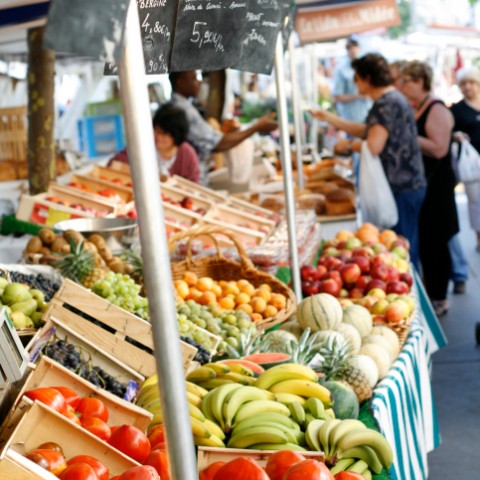
18- Toward – về phía
To go toward something is to go in its direction and get closer to it. This word can often appear in a sentence with ‘straight ahead’, as in:
“Go straight ahead, toward the park.”
If you’ve come to Vietnam to teach English, you might have to ask someone how to find your new school. Depending on what town you’re in, you could simply head toward the residential area at lunch time. You’ll see (and probably hear) the primary school soon enough – it will be the big fenced building with all the kids running around the yard!
19- Facing – hướng vào
If you look at yourself in a mirror, you’ll be facing your reflection. In other words: you and your reflection look directly at each other. Many plush hotels are ocean-facing or river-facing, meaning the main entrance is pointed directly at the water, and the beach out front faces the hotel.
20- Beside – bên cạnh
I know of a special little place where there’s a gym right beside a river. You can watch the sun go down over the water while working out – it’s amazing. What’s more, you can park your scooter beside the building and it will still be there when you come out.
21- Corner – góc
I love a corner when it comes to directions. A street corner is where two roads meet at an angle – often 90 degrees – making it easier to find than a location on a straight plane.
“Which building is the piano teacher in, sir?”
“Oh, that’s easy – it’s the one on the corner.”
The key to a corner is that it leads in two directions. It could form a crossroads, a huge intersection, or it could be the start of a tiny one-way cobblestone street with hidden treasures waiting in the shadow of the buildings.
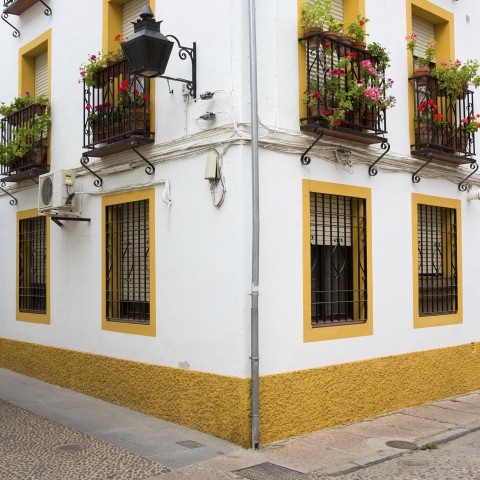
22- Distant – xa
When a location is distant, it’s in an outlying area. This Vietnamese word refers to the remoteness of the site, not to how long it takes to get there. For that reason, it’s a very good idea to write the directions down, rather than try to memorize them in Vietnamese. Even better, get a Vietnamese person to write them down for you. This may seem obvious, but always include the location of your starting point! Any directions you’re given will be relative to the exact place you’re starting from.

23- Close – gần
This word is always a good one to hear when you have your heart set on a very relaxing day in the sun. It means there’s only a short distance to travel, so you can get there in a heartbeat and let the tanning commence. Remember to grab your Nook Book – learning is enhanced when you’re feeling happy and unencumbered. Being close to ‘home’ also means you can safely steal maximum lazy hours and leave the short return trip for sunset!

24- By – bằng
This word identifies the position of a physical object beside another object or a place. A Bed and Breakfast can be ‘by the sea’ if it’s in close proximity to the sea.
‘By’ can also be used to describe the best mode of transport for your route, as in:
“You can get there by bus.”
25- Surrounding – xung quanh
If something is surrounding you, it is on every side and you are enclosed by it – kind of like being in a boat. Of course, we’re not talking about deep water here, unless you’re planning on going fishing. Directions that include this word are more likely to refer to the surrounding countryside, or any other features that are all around the place you’re looking for.

26- All sides – mọi phía
Another useful descriptive Vietnamese term to know is ‘all sides’. It simply means that from a particular point, you will be able to see the same features to the front, back and sides of you. It doesn’t necessarily imply you’ll be completely surrounded, just more-or-less so. Say, for example, you’re visiting the winelands for the day. When you get there, you’ll see vineyards on all sides of you. How stunning! Don’t neglect to sample the local wines – obviously.
27- Next to – kế bên
The person giving you directions is probably standing next to you. The place being described as ‘next to’ something is in a position immediately to one side of it. It could refer to adjoining buildings, neighbouring stores, or the one-legged beggar who sits next to the beautiful flower vendor on weekdays. ‘Next to’ is a great positional term, as everything is next to something!
“Excuse me, Ma’am. Where is the train station?”
“It’s that way – next to the tourist market.”
28- Above – ở trên
This is the direction you’ll be looking at if you turn your head upwards. Relative to where your body is, it’s a point higher than your head. If you’re looking for the location of a place that’s ‘above’ something, it’s likely to be on at least the first floor of a building; in other words, above another floor.
‘Above’ could also refer to something that will be visible overhead when you get to the right place. For example, the road you’re looking for might have holiday decorations strung up from pole to pole above it. In the cities, this is very likely if there’s any kind of festival going on.

29- Under – dưới
Under is the opposite of above, and refers to a place that lies beneath something else. In the case of directions in Vietnamese, it could refer to going under a bridge – always a great landmark – or perhaps through a subway. In some parts of the world, you can even travel through a tunnel that’s under the sea!
Of course, you might just be missing your home brew and looking for an awesome coffee shop that happens to be under the very cool local gym you were also looking for. Nice find!
2. Getting directions in Vietnamese
The quickest and easiest way to find out how to get where you’re going is simply to ask someone. Most people on the streets of Vietnam won’t mind being asked at all and will actually appreciate your attempt to ask directions in Vietnamese. After all, most tourists are more inclined to ask in their own language and hope for the best. How pedestrian is that, though?

I know, I know – you normally prefer to find your own way without asking. Well, think of it like this: you obviously need to practice asking questions in Vietnamese as much as you need to practice small talk, counting, or ordering a beer. Since you can’t very well ask a complete stranger if they would please help you count to five hundred, you’ll have to stick with asking directions!
We spoke earlier about body relative directions and these tend to be the ones we use most. For example:
“Turn left.”
“Go straight.”
“Turn right.”
Remember, too, that your approach is important. Many people are wary of strangers and you don’t want to scare them off. It’s best to be friendly, direct and get to the point quickly. A simple ‘Hi, can you help me?” or “Excuse me, I’m a bit lost,” will suffice. If you have a map in your hand, even better, as your intentions will be clear.
The bottom line is that if you want to find your way around Vietnam with ease, it’s a good idea to master these basic phrases. With a little practice, you can also learn how to say directions in Vietnamese. Before you know it, you’ll be the one explaining the way!
3. Conclusion
Now that you have over thirty new directional phrases you can learn in Vietnamese, there’s no need to fear losing your way when you hit the streets of Vietnam. All you need is a polite approach and your own amazing smile, and the locals will be excited to help you. It’s a chance for them to get better at explaining things to a foreigner, too. Most will enjoy that!
I advise keeping a few things handy in your day pack: a street map, a highlighter, a small notebook and pen, and your Vietnamese phrasebook. It would be useful to also have the Vietnamese WordPower app installed on your phone – available for both iPhone and Android.
Here’s a quick challenge to get you using the new terms right away. Can you translate these directions into Vietnamese?
“It’s close. Go straight ahead to the top of the hill and turn left at the corner. The building is on the right, opposite a small bus stop.”
You’re doing amazingly well to have come this far! Well done on tackling the essential topic of ‘directions’ – it’s a brave challenge that will be immensely rewarding. Trust me, when you’re standing at a beautiful location that you found just by knowing what to ask in Vietnamese, you’re going to feel pretty darn good.
If you’re as excited as I am about taking Vietnamese to an even deeper level, we have so much more to offer you. Did you know that we’ve already had over 1 billion lesson downloads? I know – we’re blown away by that, too. It’s amazing to be bringing the world’s languages to people who are so hungry for learning. Let me share some of our best options for you:
- If you haven’t done so already, grab your free lifetime account as a start. You’ll get audio and video lessons, plus vocabulary building tools.
- My favorite freebie is the word of the day, which will arrive in your inbox every morning. Those are the words I remember best!
- Start listening to Vietnamese music. I’m serious – it really works to make the resistant parts of the brain relax and accept the new language. Read about it here for some tips.
- If you enjoy reading, we have some great iBooks for your daily commute.
- If you have a Kindle and prefer to do your reading on a picnic blanket, there are over 6 hours of unique lessons in Vietnamese for you right there.
That’s it for today! Join VietnamesePod101 to discover many more ways that we can offer you a truly fun and enriching language learning experience. Happy travels!

Learn the Best Compliments in Vietnamese for Any Occasion
What would you say to lift the spirits of a special person you know? No doubt, you have dozens of kind words that come to mind in English, but do you know many compliments in Vietnamese?
A compliment can be described as a polite expression of praise, admiration, encouragement or congratulations. It’s sometimes used in absolute sincerity and sometimes to flatter, but either way, human beings love to receive compliments!
Table of Contents

1. The Importance of Compliments
Giving and receiving compliments is so important in society, that you can be considered rude if you’re a person who never acknowledges anyone. We all need to hear words of affirmation to feel good about ourselves or our achievements, whether big or small. Life is full of daily challenges that can feel overwhelming sometimes – both in terms of the things we have to accomplish and the way we look at the world.
Call it vanity, but it’s a basic human need to hear kindness and appreciation from other people. In the same way, we need to be giving out some of that kindness and helping others to feel good about themselves. Remember the saying “It’s better to give than to receive”? Well, that applies to compliments in a big way. The cool thing is that when you’re generous with your words, you more than likely will invite the same back from people.
So, where did this wonderful idea originate? The word ‘compliment’ has its origins in the mid-17th century; back then it meant ‘fulfilment of the requirements of courtesy’. There was a time when it was normal to compliment others upon meeting for the first time. In some cultures, that’s still the norm. If only we could have more of that today!
If you think about how much it means to receive a genuine compliment from someone whose opinion matters to you, it’s easy to reverse that and realize they probably feel the same way. There is no way around this: it’s vital to pay compliments to each and every person who is a part of your life, and to do so regularly and with sincerity.
2. Compliments you always want to hear
The nuances in the type of personal compliments you’ve been hearing all your life are so deeply present with you by now, that you have a very specific emotional response to each of them. It will be a little different for each of us, since we’ve had different input from the people around us since childhood – especially from family and close friends – but we’re individually used to certain words and as a result, we can detect when they’re spoken with sincerity. How we perceive and receive compliments from specific people has a lot to do with how much we value them, too.
Put yourself in a foreign country and suddenly you’re having to think about the words you’re hearing, doing mental and emotional arithmetic to determine the speaker’s intent. It’s tricky business! When you’ve only been learning Vietnamese for a little while, you’ll get the gist, but some of the speaker’s truth might be lost on you.
Can you see where I’m going with this? When it comes to compliments in Vietnamese, do yourself a great favor and use them often. Learn the real meaning and impact of what you’re saying, and you’ll be able to start feeling those squishy emotional responses in no time. You’ll also be able to pay genuine compliments in Vietnamese that will win people over and earn you a valued place in their hearts.
A compliment in Vietnamese culture is as important as one in any other culture – perhaps even more so. Part of fitting into your new community means having a likeable and approachable nature, so bring on the compliments and start winning people over!
VietnamesePod101 has fifteen great compliments to teach you for various situations. Enjoy!
1- You’re handsome. – Bạn khá đẹp trai.
Do you know how to compliment a guy in Vietnamese? This is one of the best Vietnamese compliments you can pay a man if you want to make him feel attractive. What man doesn’t like to hear that he’s handsome? The younger generation may see it as quite an old-fashioned word, yet men of all ages respond well to “You’re handsome”.
There are many other ways to tell a guy that he’s good-looking, of course, but these particular words carry a timelessness that is only ever good. It doesn’t have any subtle meanings or flirtatious implications, so it’s pretty safe to say to a man who you have no romantic intentions with. Of course, it certainly can also be said romantically! As with most things, it’s all in the way you do it.
2- Great job! – Làm tuyệt vời lắm!
When you’ve worked really hard at something, you want your efforts to be appreciated. There isn’t one of us who doesn’t feel that way. You might know you’ve done a great job, but you need to know that other people have noticed and are appreciative of your effort. Otherwise, why bother giving it your all? Part of our basic makeup as humans is the need to be pleasing to others.
How much more so in a work environment, where your performance could determine the trajectory of your career? We seek validation from our bosses mainly because this is vital information that tells us whether we’re heading for success or failure.
3- Your resume is impressive. – Sơ yếu lý lịch của bạn ấn tượng.
It’s pretty much a given that attending a job interview is going to be nerve-wracking and the first thing you want to be sure of is that your resume looks good to the interviewer. Hearing the above words will give you hope and help you to relax before the questions start. In other words, these are important Vietnamese praise words to know if you’re job-hunting. Next time you’re being interviewed by a Vietnamese boss, listen for these words, as they’re a positive sign.
In my experience working abroad, I found that the most important requirement interviewers had was just that they like me. By the time you get to the interview, you’ve already been screened, so what’s next in the deciding factor? It’s simple: chemistry. The energy between two people is a huge factor in how well you’ll work together, and that magic happens in the first ten minutes. First impressions go a long way!
4- Your inside is even more beautiful than your outside. – tâm hồn bạn thậm chí còn đẹp hơn vẻ bề ngoài của bạn.
Isn’t this just a wonderful compliment to hear? It sure is, and that makes it equally wonderful to give. If you meet someone who has a heart of gold, use these words!
Most women love to be complimented on their external beauty, but being seen as attractive can feel like a burden if it’s the only thing people notice. When paying compliments in Vietnamese to a woman, try to think of her personality and what her perception of your words will be. Women want different things from different people, and someone who cares about you will care a lot about how you see her on the inside. Looks are fleeting; the people we trust to stick around forever are those who’ve seen beneath the surface and still want in.
It seems to be true that the more self-aware and ‘conscious’ a person is, the more they’re going to appreciate being valued for their place and importance in this world, above their looks. Men or women – we’re the same in this way. It doesn’t mean you should stop telling people that they’re physically beautiful, just that you should balance it with thoughtful observations about the person’s character. Psychologically, we crave this balance and without it, insecurity gets a foot in the door.
Men are no different. Compliments directed to a man’s inner core are highly prized by guys. For his self-esteem, he needs to know he is valued for who he is deep down.
5- You make me want to be a better person. – Bạn làm cho tôi muốn trở thành một người tốt hơn.
Do you know someone who inspires you so much, that their mere existence makes you want to move those metaphorical mountains and become the absolute best version of yourself?
This phrase is a lovely thing to say to someone who you care about on a personal level. It’s the kind of compliment reserved for the few special individuals who mean so much to us, that our greatest desire is to have them see us ‘becoming’ – not for anyone’s profit, but just for the sake of love and personal growth.
You might feel this way about a romantic partner, a very close friend or a family member. If you feel this way, don’t hold it in! That person needs to hear it. You will make them feel good and help them to know that the love they put into nurturing your heart is noticed. Chances are, they feel the same way about you.
When you look for the good in others, you start to see the good in yourself. It takes a bit of thought to come up with a string of kind words that convey maximum positive truth about the other person; in those moments, you’re being unselfish and considering their needs before your own. I genuinely believe that paying someone a heartfelt compliment is an act of self-love. After all, giving is more important than receiving. When you give out compliments that are true, you do the world a service and create beauty in your circle. What’s more, you invite reciprocated words of affirmation – whether from the same person, or someone else. When you give, it will inevitably come back to you.
6- That jacket looks nice on you. – Chiếc áo khoác đó trông đẹp khi trên người bạn.
Men secretly love to be complimented on their clothes. Yup – it makes a man feel good to hear these words, especially since a favorite jacket is something he’ll wear often in cooler weather or to work. If the fabric brings out his eyes, tell him!
Learning some practical and more specific Vietnamese compliments like this one is a great idea, because it shows that you’ve actually thought about what you’re saying. Noticing details about a person’s outfit and commenting on them comes across well to the hearer and sounds more sincere than “You look good.” Think about the last time someone noticed your outfit, and you’ll know just what I mean. It makes you feel more confident as you go about your day.
7- I know that it was a tough project, but your performance exceeded my expectations. – Tôi biết rằng nó là một dự án khó khăn, nhưng thành quả của bạn vượt quá mong đợi của tôi.
In the work environment, it’s vital to know some Vietnamese praise words that encourage, uplift and express real appreciation. In this sense, compliments can be a form of leadership; a good leader helps his or her team to grow by building them up and pushing them on.
If you hear these Vietnamese words, you can rest assured that your boss is very pleased with your work. If you’re a teacher at a Vietnamese high school, this is also a great phrase to encourage learners with when they’ve worked hard on a project.
8- You’re smart! – Bạn thật thông minh!
Smart, clever, brainy – these are all synonyms for intelligence and one of the best compliments you can give. Everybody likes being thought of as smart, so here’s a compliment that can be used in both casual and formal settings. We say this to boost the self-esteem of kids, to praise our friends when they have good ideas and to express awe of a colleague in the workplace.
Being ‘smart’ can mean you make good choices in general, that you have a particular area you excel in, or even that you have an above-average IQ.
Everybody likes the idea of having a high IQ, but it’s not as simple to determine what that even means as we once thought. When I was studying to work in Asia, there was a lot of buzz about Multiple Intelligences Theory as a more accurate determination of intelligence than traditional IQ testing. The theory was developed by Doctor Howard Gardner and the critical reception was complex, to say the least.
Gardner argues that there is a wide range of cognitive abilities, but that there are only very weak correlations among them. For example, a child who learns to multiply easily is not necessarily more intelligent than a child who has difficulty with this task; the child who seems better at art might actually understand multiplication at a fundamentally deeper level. Humans have different learning styles; if one appears to have difficulty grasping a certain concept, the first step is to change the teaching approach.
We’re all smart in our own way, so remind your reflection of that each morning!
9- You are an awesome friend. – Bạn là một người bạn tuyệt vời.
On a more personal note – how good does it make you feel to hear that your friend appreciates you? I’d say it’s right up there with the best kinds of ‘thank you’. Knowing this, it makes sense to learn this phrase in Vietnamese and use it next time your Vietnamese friend has done something selfless and amazing for you. Let them know with this compliment in Vietnamese and make their day.
The lovely thing about using these words is that they encourage even more acts of kindness and support from friends. When you put effort and energy into a friendship and aren’t afraid to share sentiments of love, such as this phrase, chances are the friendship will go the distance. If your sojourn in Vietnam is more than a few weeks, you’re going to need a good friend or two, so hold on to this friendly phrase!
10- You have a great sense of humor. – bạn có sự nhạy bén tuyệt vời.
Did you know that chimpanzees, gorillas, bonobos, and orangutans engage in social laughter? It’s true! Laughter is an important form of social play that connects us and helps to relieve tension. It’s nice being around someone who makes us laugh or who finds us amusing.
I have a weird sense of humor that many people don’t get, but those who do seem to end up cry-laughing a lot in my presence and somehow that makes them my favorite humans. I’ve learned who I can and can’t be funny with. Have you had a similar experience?
Being able to tell someone that you like their sense of humor is important in your social circle. In fact, take these words along with you on a date. If he or she cracks you up, they will definitely appreciate hearing you say so in Vietnamese.
11- Your smile is beautiful. – Nụ cười của bạn thật đẹp.
When paying aesthetic compliments in Vietnamese, especially to a woman you don’t know very well, try to avoid talking about her body and say something like “Your smile is beautiful”, instead. It’s a guaranteed winner! It can be tricky complimenting women in this modern world, where ladies don’t always feel safe, but that’s no reason to stop expressing admiration altogether. Choose your words wisely and you’ll be well on your way to making their day!
Let’s not exclude men from this compliment, though – it’s an excellent choice for a guy you like and feel safe with. In fact, the beauty of this compliment is that you can say it to pretty much anyone, of any age, and it will likely be well-received. Next time you want to make a homeless person smile – this is the better word choice!
12- I love your cooking. – Tôi thích cách nấu nướng của bạn.
If there’s one form of praise we can’t leave out, it’s how to give kudos for someone’s culinary skills. Vietnamese compliments for food are a must if you want to be invited back for another home-cooked dinner at the home of the local masterchef. As much as the street food is to die for, nothing beats the experience of an authentic home-cooked meal in Vietnam. Be sure to read up on basic dining etiquette before you go, and don’t forget to download the Vietnamese WordPower app to your phone so you can confidently ask the cook for tips.
13. You have good taste. – Bạn có vị giác tốt.
My sister is one of those people who’d rather be complimented on her taste than on her personality, brains or looks. Do you know someone like that? It’s usually the girl or guy in your group who’s always well-dressed and probably has a full-on feng shui vibe in their home. If you meet someone in Vietnam who loves their labels, only wears real leather and whose hair is always on-fleek, here’s a compliment they will appreciate.
To have good taste means knowing what is excellent and of good quality, with an eye for detecting subtle differences that make something genuine or not. People with good taste can discern what others find appealing, and tend to impress with their aesthetic choices. This friend will be the one you’ll go to when you aren’t sure what jacket to buy for your interview, or what gift to choose for your hosts.
So, is good taste about social conventions, or the genuine value of an item? Well, since it can refer to taste in music, art, design and fine wines as well as style choices, I think it’s an interesting combination of both. What do you think?
14- You look gorgeous. – Bạn trông thật lộng lẫy.
“Gorgeous” makes me think of powder blue lakes, newborn babies, wild horses and Terrence Hill in the 80’s. Synonymous with ‘stunning’, it’s a word that means something beyond beautiful and as such, it’s one of the ultimate words of admiration. The vocabulary.com dictionary suggests reserving this word for the kind of looks that take your breath away; in other words, save it for someone special – like a date you adore and definitely want to see again.
Does that mean you can only tell a captivating date that they look gorgeous? Of course not. You can say “You look gorgeous” to a friend dressed up to meet their beau, a child tolerating a bunny suit for the school play, or to anyone special who needs a confidence boost. As long as you’re being sincere, this is a wonderful phrase to express admiration.
15- You have a way with words. – Bạn có khả năng ăn nói.
There’s always that one person in the group who’s great at articulating deep thoughts, writing intriguing social media posts or comforting others when they’re feeling low. Your companion with this skill is likely very empathetic and although the words seem to come easy for them, they might find it difficult to be vulnerable.
When your friend or lover has let their guard down and shown you that soft place, don’t be afraid to tell them that it’s good, because they need to hear it. “You have a way with words” is a meaningful phrase that lets them know they’ve made a positive impact and their words are wanted. Your kind compliment will ensure that their eloquent words keep coming.
3. Conclusion
Next time you’re traveling or working in Vietnam, keep an ear open for the compliments you’ve learned, as they might be aimed at you! If you’re taking time to listen to native speakers on our YouTube channels or with Audio Books, it will also help a lot with the accent. Familiarizing yourself with the sound of compliments in the Vietnamese culture is important for your journey and will make your overall experience more meaningful.
Being acknowledged by others helps us to feel accepted and secure, and these are two things we all want to feel when venturing into unfamiliar territory. Remember that although compliments have more impact in your own language, it’s only because you’ve spent a lifetime hearing them and have become accustomed to the fullness of their meaning. You can get there with Vietnamese, too – it just takes a little time.
Don’t forget the golden rule: give more than you receive! Paying compliments to the people you meet will not only give you excellent language practice, but the reward will be new friendships and positive vibes.
Here are a few more ways you can practice daily:
- Chat online with the guys and gals in our learning community. Nothing beats real-time information on how people are currently speaking. It’s a good way to hear some Vietnamese colloquialisms.
- Take time out to read. Reading is an excellent way to develop photographic memory of how the phrases look in Vietnamese. We have both iBooks and Kindle books to choose from.
- There are also some fantastic free podcasts you can listen to on iTunes. They promise to get you speaking after the very first lesson.
One last thought I want to leave you with: don’t forget to receive a compliment with grace. You deserve to hear good words, so get used to smiling and just feeling the kindness with gratitude.
Well, time for me to go! I hope you’ve enjoyed learning these useful compliments with us at VietnamesePod101 today. Now, go out and find some cool people who need to hear them!

Get Angry in Vietnamese with Phrases for Any Situation!
Anger is a natural response to pain of some sort; when you’re angry, you’re angry with a cause and want someone to pay! It’s so much harder when you’re traveling, because your routines are off-kilter, there’s culture shock to deal with and the smallest problems can seem overwhelming. How do you handle someone who’s just pushed your last button?
At home, we often have a go-to person who is good at calming us down, but emotions are tricky to deal with in a foreign country. Sometimes people may treat you unfairly, but you’re completely baffled as to why. You have to remember that people in Vietnam think differently to how you do and it’s not impossible to inadvertently cause offense. Don’t stress about it too much, because you’ll adapt! Once you feel at home in Vietnam and people get to know you, it will be easy to flow with the local rhythm and handle tensions well.
This brings us to two obvious reasons why you should learn some angry phrases in Vietnamese: first, so you can understand when you’ve upset a Vietnamese person, and second, to have the vocabulary to tell a person off when they absolutely have it coming. Not only will you be far more likely to solve the problem if you know some appropriate angry Vietnamese phrases, but you’ll probably earn some respect, too! At VietnamesePod101 we’re ready to help you articulate those feelings.

Table of Contents
1. Vietnamese phrases to use when you’re angry
Okay, so you’ve had a very frustrating day at your new teaching job in Vietnam and all you want to do is chill on your bed with ice-cream and a Nook Book, but you come home to find your landlord in your apartment, apparently doing an inspection of your personal possessions. How do you handle it? Do you have an angry Vietnamese translation for “What the heck are you doing?”
If there’s one thing I’ve learned about confronting someone in their own country, it’s to press the pause button on my reactions and think first! Is my first thought worth expressing? Sometimes, you need to think like a chess player: if I make this move, what will happen next?
It’s always better to think ‘win-win’ in Vietnam. A good tactic is to keep a mental note of your personal speed limit before engaging. After all, you want a positive outcome!
So, do you know how to say “I am angry” in Vietnamese? You will – VietnamesePod101 is about to teach you how to get mad! Here are fifteen great angry phrases in Vietnamese.
1- It’s none of your business. – Nó không phải là chuyện của bạn.
As a foreigner in Vietnam, you’ll be a topic of interest. While most folks understand boundaries, there’s always that one individual who doesn’t!
Sometimes you feel that a person is getting way too involved in your affairs, and this expression is a commonly-used one for letting them know that. If said calmly and firmly, while looking them in the eye, it should do the trick and even earn you some respect.
2- I’m upset. – Tôi đang bực.
I find this phrase useful for times when I need to express annoyance to someone I can’t afford to lose my temper with. A boss, for instance. As long as you say it without yelling, this can be a polite way of letting someone know that you are feeling bad and that you want those feelings validated. No matter what has happened, the result is that you are troubled and need some time to get over it. Depending on how you say it, “I’m upset” can also be a subtle invitation for the other party to address the problem.
3- You’re not listening to me. – Bạn đang không lắng nghe tôi.
Isn’t this the most frustrating thing? You’re in a situation where you’re telling someone why you’re mad at them, but they just won’t look at the story from your point of view. Rather than resort to bad language, try to convince them to take a breather and hear you out. This expression is a great way to ask someone to stop talking and to listen to you properly.
4- Watch your mouth. – Cẩn thận cái mồm của bạn.
Where have you heard this before? Let your mind go back to all the times you were cheeky and disrespectful in your youth… that’s right – it was your parents! If you’re on the receiving end, this angry phrase means that you said something you shouldn’t have. It has an authoritative, challenging tone and it implies that there could be consequences if you don’t stop.
So, when can you use it? Well, be careful with this one; it may very well get you in trouble if not used with caution. It can also be seen as very rude if used on anyone you don’t actually have authority over!
5- That’s enough. – Thế là đủ rồi.
Depending on your tone of voice when you say this, you could be calmly telling someone to stop doing what they’re doing, or you could be sternly ordering them to stop. In Vietnamese, as in English, tone is key when it comes to making yourself understood. Just don’t be saying this to anyone, as it carries an authoritative tone and would be seen as rude if said to an older person.
6- Stop it. – Dừng lại đi.
One of the more common imperatives in any language, this is a basic way to warn somebody that you don’t like what they’re doing and want them to stop. You can use it in most situations where a person is getting under your skin. Often, “Stop it” precedes some of the weightier phrases one resorts to if the offender doesn’t stop and anger escalates. For this reason, I always add a “Please” and hope for the best!
7- Cut it out. – Thôi đi.
I think parents and teachers everywhere, throughout time, have heard variations of this expression of annoyance for as long as we’ve had tweens and teens on Earth! It’s a go-to command, thrown about frequently between siblings and peers, to stop being irritating. You’d generally use this on people you consider your relative equals – even though in the moment, you probably consider them low enough to stomp on!
8- What the heck are you doing? – Bạn đang làm cái quái gì vậy?
Here’s an interjection for those instances when you can scarcely believe what you’re seeing. It denotes incredulity ranging from mild disbelief to total disgust or dismay. You would typically use this when you want an action to stop immediately, because it’s wrong – at least, in your perception of things.
It may be worth remembering that the English word “heck” doesn’t have a direct translation in Vietnamese – or in other languages, for that matter; most translations are more accurately saying “What the hell.” We say “heck” in English as a euphemism, but that word is thought to come from “hex” – an ancient word for “spell” – so I don’t know which is better!
9- Who do you think you are? – Bạn nghĩ bạn là ai?
I avoid this expression as it makes me nervous! It’s quite confrontational. I’m reminded of the time a clerk in a busy cellular network service store was being rude to me and a rich-looking man came to my rescue, aiming this phrase at the clerk loudly and repeatedly. At first, I was relieved to have someone on my side, but I quickly grew embarrassed at the scene he was causing.
Using this phrase has a tendency to make you sound like you feel superior, so take it easy. The irony, of course, is that someone who provokes this response is taking a position of authority or privilege that they aren’t entitled to! Now you look like two bears having a stand-off.
They call this an ‘ad hominem’ argument, meaning the focus has shifted from attacking the problem, to attacking the person. So, is it a good phrase to use? That’s up to you. If you’re in the moment and someone’s attitude needs adjusting – go for it!
10- What?! – Cái gì?!
An expression of disbelief, this is frequently said mid-argument, in a heated tone, and it means you cannot believe what you’re hearing. In other words, it conveys the message that the other person is talking nonsense or lying.
11- I don’t want to talk to you. – Tôi không muốn nói chuyện với bạn.
This is a great bit of vocab for a traveler – especially for a woman traveling solo. Whether you’re being harassed while trying to read your Kindle on the train, or hit on by a drunk man in a bar, chances are that sooner or later, you will encounter a character you don’t wish to speak to.
The most straightforward way to make the message clear is to simply tell them, “I don’t want to talk to you”. If you feel threatened, be calm and use your body language: stand straight, look them in the eye and say the words firmly. Then move away deliberately. Hopefully, they will leave you alone. I’d go so far as to say learn this phrase off-by-heart and practice your pronunciation until you can say it like a strong modern Vietnamese woman!
12- Are you kidding me? – Bạn đang đùa tôi à?
To be ‘kidding’ means to joke with someone in a childlike way and it’s used both in fun and in anger. Like some other expressions, it needs context for the mood to be clear, but it pretty much conveys annoyed disbelief. You can use it when a person says or does something unpleasantly surprising, or that seems unlikely to be serious or true. It’s a rhetorical question, of course; try to familiarize yourself with how it sounds in Vietnamese, so next time it’s aimed at you, you don’t hunt your inner Vietnamese lexicon for an answer!
13- This is so frustrating. – Điều này là rất khó chịu.
Another way of showing someone you have an intense battle going on inside, is to just tell them you’re terribly frustrated and feeling desperate to find a solution. Use this expression! It can be a useful tool to bring the other person into your headspace and maybe even evoke some degree of empathy from them. More polite than many others, it’s a sentence that seems to say, “I beg you to work with me so we can resolve this!”
14- Shut up. – Im đi!
The use of the phrase “shut up” to signify “hold one’s tongue” dates back to the sixteenth century and was even used by Shakespeare as an insult – with various creative twists! It’s been evolving ever since and there are variations in just about every language – proving that no matter where you come from, angry emotions are universal!
One example of old usage is a poem Rudyard Kipling wrote in 1892, where a seasoned military veteran says to the troops: “Now all you recruities what’s drafted to-day, You shut up your rag-box an’ ‘ark to my lay.”
Well, when I was twelve and full of spirit, I was taught that nice girls don’t say this. “Shut up” is an imperative that’s considered impolite; it’s one of those expressions people resort to when they either can’t think of better words to use, or simply can’t bear to listen to any more nonsense. Either way, it’s at the lower end of the smart argument scale. Like all angry phrases, though, it does have its uses!
15- So what? – Vậy, làm sao?
When you don’t believe the other person’s defense argument legitimizes or justifies their actions, you might say these words. Basically, you’re telling them they need to come up with better logic!
Another time you could use this one, is when you simply don’t care for someone’s criticism of you. Perhaps you don’t agree with them, or they’re being unfair and you need to defend your position. “So what?” tells them you feel somewhat indignant and don’t believe you’re in the wrong.
2. Feeling negative in Vietnamese
What was the most recent negative emotion you felt? Were you nervous about an exam? Exhausted and homesick from lack of sleep? Maybe you felt frightened and confused about the impact COVID-19 would have on your travel plans. If you’re human, you have days when you just want the whole world to leave you alone – and that’s okay!
When you’re feeling blue, there’s only so much body language can do. Rather than keeping people guessing why you’re in a bad mood, just tell them! Your Vietnamese friends and colleagues will be much more likely to give you your space (or a hug) if they know what’s wrong. Not only that, but it’s nice to give new friends the opportunity to be supportive. Bring on the bonding!
The fastest way to learn to describe negative feelings in Vietnam, is to get into the habit of identifying your own mood daily in Vietnamese. Here’s an easy way: in your travel journal, simply write down the Vietnamese word for how you feel each morning. You can get all the words directly from us at VietnamesePod101. Remember, also, that we have a huge online community if you need a friend to talk to. We’ve got you!
3. Conclusion
Now that you know how to express your bad feelings in Vietnamese, why not check out some other cool things on our site? You can sign up for the amazing free lifetime account – it’s a great place to start learning!
And really – make the most of your alone time. After all, it’s been proven that learning a new language not only benefits cognitive abilities like intelligence and memory, but it also slows down the brain’s aging. So, on those days when you just need to be away from people, we have some brain-boosting suggestions that will lift your spirits:
- Have you heard of Roku? A Roku player is a device that lets you easily enjoy streaming, which means accessing entertainment via the internet on your TV. We have over 30 languages you can learn with Innovative Language TV. Lie back and enjoy!
- If you like your Apple devices, we have over 690 iPhone and iPad apps in over 40 languages – did you know that? The Visual Dictionary Pro, for example, is super fun and makes learning vocab easy. For Android lovers, we have over 100 apps on the Android market, too.
- You can also just kick back on the couch and close your eyes, letting your headphones do the work with our audiobooks – great for learning the culture while you master the language. Similarly, if you’re more of a reader, we have some fantastic iBooks that are super interesting and fun for practicing your daily conversation skills.
Whatever your learning style (or your mood), you’ll find something that appeals to you at VietnamesePod101. Come join us!

Essential Vocabulary for Life Events in Vietnamese
What is the most defining moment you will face this year? From memories that you immortalize in a million photographs, to days you never wish to remember, one thing’s for certain: big life events change you. The great poet, Bukowski, said, “We are here to laugh at the odds and live our lives so well, that death will tremble to take us.” The older I get, the more I agree with him!
Talking about significant events in our lives is part of every person’s journey, regardless of creed or culture. If you’re planning to stay in Vietnam for more than a quick visit, you’re sure to need at least a few ‘life events’ phrases that you can use. After all, many of these are shared experiences, and it’s generally expected that we will show up with good manners and warm wishes.

Table of Contents
1. Life Events
Do you know how to say “Happy New Year” in Vietnamese? Well, the New Year is a pretty big deal that the whole world is in on! We celebrate until midnight, make mindful resolutions, and fill the night sky with the same happy words in hundreds of languages. No doubt, then, that you’ll want to know how to say it like a local!
Big life events are not all about fun times, though. Real life happens even when you’re traveling, and certain terminology will be very helpful to know. From talking about your new job to wishing your neighbors “Merry Christmas” in Vietnamese, here at VietnamesePod101, we’ve put together just the right vocabulary and phrases for you.
1- Birthday – sinh nhật
If you’re like me, any excuse to bring out a pen and scribble a note is a good one. When there’s a birthday, even better: hello, handwriting!
Your Vietnamese friend will love hearing you wish them a “Happy birthday” in Vietnamese, but how much more will they appreciate a thoughtful written message? Whether you write it on their Facebook wall or buy a cute card, your effort in Vietnamese is sure to get them smiling! Write it like this:
Chúc mừng sinh nhật
Now that you know the words, I challenge you to put them to music and sing your own “Happy birthday” song in Vietnamese! It’s not impossible to figure out even more lyrics, once you start discovering the language from scratch.
2- Buy – mua
If there’s a special occasion, you might want to buy somebody a gift. As long as you’ve checked out Vietnamese etiquette on gift-giving (do a Google search for this!), it will be a lovely gesture. If you’re not sure what to buy, how about the awesome and universally-appealing gift of language? That’s a gift that won’t stop giving!
3- Retire – nghỉ hưu
If you’re planning to expand your mind and retire in Vietnam, you can use this word to tell people why you seem to be on a perpetual vacation!
Retirement is also a great time to learn a new language, don’t you think? And you don’t have to do it alone! These days it’s possible to connect to a vibrant learning community at the click of a button. The added benefit of a Daily Dose of Language is that it keeps your brain cells alive and curious about the world. After all, it’s never too late to realize those long-ignored dreams of traveling the globe…
4- Graduation – tốt nghiệp
When attending a graduation ceremony in Vietnam, be prepared for a lot of formal language! It will be a great opportunity to listen carefully and see if you can pick up differences from the everyday Vietnamese you hear.
5- Promotion – sự thăng chức
Next to vacation time, receiving a promotion is the one career highlight almost everyone looks forward to. And why wouldn’t you? Sure, it means more responsibility, but it also means more money and benefits and – the part I love most – a change of scenery! Even something as simple as looking out a new office window would boost my mood.
6- Anniversary – ngày kỉ niệm
Some anniversaries we anticipate with excitement, others with apprehension. They are days marking significant events in our lives that can be shared with just one person, or with a whole nation. Whether it’s a special day for you and a loved one, or for someone else you know, this word is crucial to know if you want to wish them a happy anniversary in Vietnamese.
7- Funeral – đám tang
We tend to be uncomfortable talking about funerals in the west, but it’s an important conversation for families to have. Around the world, there are many different customs and rituals for saying goodbye to deceased loved ones – some vastly different to our own. When traveling in Vietnam, if you happen to find yourself the unwitting observer of a funeral, take a quiet moment to appreciate the cultural ethos; even this can be an enriching experience for you.
8- Travel – đi du lịch
Travel – my favorite thing to do! Everything about the experience is thrilling and the best cure for boredom, depression, and uncertainty about your future. You will surely be forever changed, fellow traveler! But you already know this, don’t you? Well, now that you’re on the road to total Vietnamese immersion, I hope you’ve downloaded our IOS apps and have your Nook Book handy to keep yourself entertained on those long bus rides.
9- Graduate – tốt nghiệp
If you have yet to graduate from university, will you be job-hunting in Vietnam afterward? Forward-looking companies sometimes recruit talented students who are still in their final year. Of course, you could also do your final year abroad as an international student – an amazing experience if you’d love to be intellectually challenged and make a rainbow of foreign friends!
10- Wedding – đám cưới
One of the most-loved traditions that humans have thought up, which you’ll encounter anywhere in the world, is a wedding. With all that romance in the air and months spent on preparations, a wedding is typically a feel-good affair. Two people pledge their eternal love to each other, ladies cry, single men look around for potential partners, and everybody has a happy day of merrymaking.
Ah, but how diverse we are in our expression of love! You will find more wedding traditions around the world than you can possibly imagine. From reciting love quotes to marrying a tree, the options leave no excuse to be boring!
11- Move – chuyển
I love Vietnam, but I’m a nomad and tend to move around a lot, even within one country. What are the biggest emotions you typically feel when moving house? The experts say moving is a highly stressful event, but I think that depends on the circumstances. Transitional periods in our lives are physically and mentally demanding, but changing your environment is also an exciting adventure that promises new tomorrows!
12- Be born – được sinh ra
I was not born in 1993, nor was I born in Asia. I was born in the same year as Aishwarya Rai, Akon, and Monica Lewinsky, and on the same continent as Freddy Mercury. When and where were you born? More importantly – can you say it in Vietnamese?
13- Get a job – có việc làm
The thought of looking for a job in a new country can be daunting, but English speakers are in great demand in Vietnam – you just have to do some research, make a few friends and get out there! Also, arming yourself with a few Vietnamese introductions that you can both say and write will give you a confidence boost. For example, can you write your name in Vietnamese?
14- Die – chết
Death is a universal experience and the final curtain on all other life events. How important is it, then, to fully live before we die? If all you have is a passport, a bucket list, and a willingness to learn some lingo, you can manifest those dreams!
15- Home – nhà
If home is where the heart is, then my home is on a jungle island completely surrounded by the turquoise ocean. Right now, though, home is an isolation room with a view of half a dry palm tree and a tangle of telephone wires.
If you’re traveling to Vietnam for an extended stay, you’ll soon be moving into a new home quite unlike anything you’ve experienced before!
16- Job – công việc
What job do you do? Does it allow you much time for travel, or for working on this fascinating language that has (so rightfully) grabbed your attention? Whatever your job, you are no doubt contributing to society in a unique way. If you’re doing what you love, you’re already on the road to your dream. If not, just remember that every single task is one more skill to add to your arsenal. With that attitude, your dream job is coming!
17- Birth – sự ra đời
Random question: do you know the birth rate of Vietnam?
If you’re lucky enough to be invited to see a friend’s baby just after they are born, you’ll have all my respect and all my envy. There is nothing cuter! Depending on which part of the country you’re in, you may find yourself bearing witness to some pretty unexpected birth customs. Enjoy this privilege!
18- Engaged – đính hôn
EE Cummings said, “Lovers alone wear sunlight,” and I think that’s most true at the moment she says “yes.” Getting engaged is something young girls dream of with stars in their eyes, and it truly is a magical experience – from the proposal, to wearing an engagement ring, to the big reveal!
In the world of Instagram, there’s no end to the antics as imaginative couples try more and more outrageous ways to share their engagement with the world. I love an airport flashmob, myself, but I’d rather be proposed to on a secluded beach – salt, sand, and all!
Engagement customs around the world vary greatly, and Vietnam is no exception when it comes to interesting traditions. Learning their unique romantic ways will inspire you for when your turn comes.
Speaking of romance, do you know how to say “Happy Valentine’s Day” in Vietnamese?
19- Marry – kết hôn
The one you marry will be the gem on a shore full of pebbles. They will be the one who truly mirrors your affection, shares your visions for the future, and wants all of you – the good, the bad and the inexplicable.
From thinking up a one-of-a-kind wedding, to having children, to growing old together, finding a twin flame to share life with is quite an accomplishment! Speaking of which…
2. Marriage Proposal Lines
Ah, that heart-stopping moment when your true love gets down on one knee to ask for your hand in marriage, breathlessly hoping that you’ll say “Yes!” If you haven’t experienced that – well, it feels pretty darn good, is all I can say! If you’re the one doing the asking, though, you’ve probably had weeks of insomnia agonizing over the perfect time, location and words to use.
How much more care should be taken if your love is from a different culture to yours? Well, by now you know her so well, that most of it should be easy to figure out. As long as you’ve considered her personal commitment to tradition, all you really need is a few words from the heart. Are you brave enough to say them in Vietnamese?
3. Talking About Age
Part of the wonder of learning a new language is having the ability to strike up simple conversations with strangers. Asking about age in this context feels natural, as your intention is to practice friendly phrases – just be mindful of their point of view!
When I was 22, I loved being asked my age. Nowadays, if someone asks, I say, “Well, I’ve just started my fifth cat life.” Let them ponder that for a while.
In Vietnam, it’s generally not desirable to ask an older woman her age for no good reason, but chatting about age with your peers is perfectly normal. Besides, you have to mention your birthday if you want to be thrown a birthday party!
4. Conclusion
Well, there you have it! With so many great new Vietnamese phrases to wish people with, can you think of someone who has a big event coming up? If you want to get even more creative, VietnamesePod101 has much to inspire you with – come and check it out! Here’s just some of what we have on offer at VietnamesePod101:
- Free Resources: Sharing is caring, and for this reason, we share many free resources with our students. For instance, start learning Vietnamese with our basic online course by creating a lifetime account – for free! Also get free daily and iTunes lessons, free eBooks, free mobile apps, and free access to our blog and online community. Or how about free Vocabulary Lists? The Vietnamese dictionary is for exclusive use by our students, also for free. There’s so much to love about VietnamesePod101…!
- Innovative Learning Tools and Apps: We make it our priority to offer you the best learning tools! These include apps for iPhone, iPad, Android and Mac OSX; eBooks for Kindle, Nook, and iPad; audiobooks; Roku TV and so many more. This means that we took diverse lifestyles into account when we developed our courses, so you can learn anywhere, anytime on a device of your choice. How innovative!
- Live Hosts and One-on-One Learning: Knowledgeable, energetic hosts present recorded video lessons, and are available for live teaching experiences if you upgrade. This means that in the videos, you get to watch them pronounce those tongue-twisters, as if you’re learning live! Add octane to your learning by upgrading to Premium Plus, and learn two times faster. You can have your very own Vietnamese teacher always with you, ensuring that you learn what you need, when you need to – what a wonderful opportunity to master a new language in record time!
- Start Where You Are: You don’t know a single Vietnamese word? Not to worry, we’ve absolutely got this. Simply enroll in our Absolute Beginner Pathway and start speaking from Lesson 1! As your learning progresses, you can enroll in other pathways to match your Vietnamese level, at your own pace, in your own time, in your own place!
Learning a new language can only enrich your life, and could even open doors towards great opportunities! So don’t wonder if you’ll regret enrolling in VietnamesePod101. It’s the most fun, easy way to learn Vietnamese.

Talk About the Weather in Vietnamese Like a Native
Did you know that every minute of the day, one billion tons of rain falls on the earth? Hard to believe, considering the climate crisis! Of course, all that rain is not equally shared across the planet.
So, would you mention this fascinating fact to your new Vietnamese acquaintance? Well, small talk about local weather is actually a great conversation-starter. Everyone cares about the weather and you’re sure to hear a few interesting opinions! Seasons can be quite unpredictable these days and nobody knows the peculiarities of a region better than the locals.
VietnamesePod101 will equip you with all the weather vocabulary you need to plan your next adventure. The weather can even be an important discussion that influences your adventure plans. After all, you wouldn’t want to get caught on an inflatable boat with a two-horsepower motor in Hurricane Horrendous!

Table of Contents
- Talking about the weather in Vietnam
- Words for the first day of spring
- Do You Know the Essential Summer Vocabulary?
- Must-Know Autumn vocabulary
- Winter
- VietnamesePod101 can prepare you for any season.
1. Talking about the weather in Vietnam
If you’re like me, your day’s activity plan is likely to begin with a strong local coffee and a chat about what the sky is doing. After all, being prepared could be the difference between an amazing day and a miserable one! Luckily, it’s not difficult to comment on Vietnamese weather – just start with these simple words and phrases.
1- The rain is falling on the street – Mưa đang rơi trên đường phố.
Watercolor artists, take out your paints! You might not be able to venture out on foot today, but just embrace the rain as part of your Vietnamese experience. When the rain stops, the air will be clean and colours vibrant.
2- The snow has covered everything – Tuyết bao phủ mọi vật.
A fresh blanket of snow is irresistibly beautiful. Pull on your boots and beanie, and leave your tracks in this foreign landscape. Don’t resist the urge to build a snowman – you need this!
3- Fluffy cloud – mây mịn như bông
When you’re waiting for a warm beach day, fluffy white clouds in a blue sky are a good sign. Don’t forget your sunscreen, as clouds will intensify the UV rays hitting your skin.
4- The water froze on the glass – Nước đã đóng băng trong ly.
Night temperatures can get chilly and might freeze the condensation on your windows. A good way to clear them up is with warm salt water.
5- The heavy rain could cause flash flooding – Cơn mưa lớn này có thể sẽ gây lụt.
If you’re visiting Vietnam in the wet season, it’s important to stay informed when heavy rain sets in, so keep an eye on the weather radar. Avoid river activities and rather spend this time making a home-cooked meal and brushing up on your Vietnamese weather words.
6- Flood – lũ lụt
If you do get caught in a flood, your destination should no longer be ‘home’, but the nearest high ground.
7- The typhoon has hit – Bão đang tiến vào đất liền.
Not all countries experience typhoons, but you need to know when to prepare for one! It will be very scary if you’ve never experienced one before. Your local neighbours are the best people to advise you on where to take shelter, as they’ve been doing it for generations. Be sure to get the low-down at the first sign of rough weather!
8- Check the weather report before going sailing – Kiểm tra bản tin thời tiết trước khi nhổ neo.
When planning an outdoor activity, especially on a body of water, always be prepared for a change in the weather. Ask your hotel receptionist or neighbour where you can get a reliable daily weather report, and don’t forget your sweater!
9- Today’s weather is sunny with occasional clouds – Thời tiết hôm nay nắng thỉnh thoảng có mây.
Sunny weather is the dream when traveling in Vietnam! Wake up early, pack the hats and sunblock and go and experience the terrain, sights and beautiful spots. You’ll be rewarded with happy vibes all around.
10- A rainy day – ngày mưa
Remember when you said you’d save the Vietnamese podcasts for a rainy day? Now’s that day!
11- Scenic rainbow – cầu vồng
The best part about the rain is that you can look forward to your first rainbow in Vietnam. There’s magic in that!
12- Flashes of lightning can be beautiful, but are very dangerous – Những tia sét có thể rất đẹp nhưng cũng rất nguy hiểm.
Lightning is one of the most fascinating weather phenomena you can witness without really being in danger – at least if you’re sensible and stay indoors! Did you know that lightning strikes the earth 40-50 times per second? Fortunately, not all countries experience heavy electric storms!
13- 25 degrees Celsius – hai mươi lăm độ C
Asking a local what the outside temperature will be is another useful question for planning your day. It’s easy if you know the Vietnamese term for ‘degrees Celsius’.
14- His body temperature was far above the usual 98.6 degrees Fahrenheit – Thân nhiệt của anh ấy cao hơn rất nhiều so với mức bình thường là chín mươi tám phẩy sáu độ Fa-hen-rít.
Although the Fahrenheit system has been replaced by Celsius in almost all countries, it’s still used in the US and a few other places. Learn this phrase in Vietnamese in case one of your companions develops a raging fever.
15- Clear sky – trời quang
Clear skies mean you’ll probably want to get the camera out and capture some nature shots – not to mention the great sunsets you’ll have later on. Twilight can lend an especially magical quality to a landscape on a clear sky day, when the light is not filtered through clouds.
16- Light drizzle – mưa phùn nhẹ
Days when it’s drizzling are perfect for taking in the cultural offerings of Vietnam. You could go to the mall and watch a Vietnamese film, visit museums and art galleries, explore indoor markets or even find the nearest climbing wall. Bring an umbrella!
17- Temperature on a thermometer – nhiệt độ trên nhiệt biểu
Because of the coronavirus, many airports are conducting temperature screening on passengers. Don’t worry though – it’s just a precaution. Your temperature might be taken with a no-touch thermometer, which measures infrared energy coming off the body.
18- Humid – ẩm ướt
I love humid days, but then I’m also a water baby and I think the two go
together like summer and rain. Find a pool or a stream to cool off in – preferably in the shade!
19- With low humidity the air feels dry – Với độ ẩm thấp không khí sẽ rất khô.
These are the best days to go walking the hills and vales. Just take at least one Vietnamese friend with you so you don’t get lost!
20- The wind is really strong – Cơn gió rất mạnh.
A strong wind blows away the air pollution and is very healthy in that respect. Just avoid the mountain trails today, unless you fancy being blown across the continent like a hot air balloon.
21- It’s windy outside – Bên ngoài trời nhiều gió.
Wind! My least favourite weather condition. Of course, if you’re a kitesurfer, a windy day is what you’ve been waiting for!
22- Wet roads can ice over when the temperature falls below freezing – Những con đường ướt có thể đóng băng khi nhiệt độ xuống dưới không độ.
The roads will be dangerous in these conditions, so please don’t take chances. The ice will thaw as soon as the sun comes out, so be patient!
23- Today is very muggy – Hôm nay rất oi bức.
Muggy days make your skin feel sticky and sap your energy. They’re particular to high humidity. Cold shower, anyone? Ice vest? Whatever it takes to feel relief from the humidity!
24- Fog – sương mù
Not a great time to be driving, especially in unknown territory, but keep your fog lights on and drive slowly.
25- Hurricane – cơn bão
Your new Vietnamese friends will know the signs, so grab some food and candles and prepare for a night of staying warm and chatting about wild weather in Vietnam.
26- Massive tornado – cơn lốc xoáy to
If you hear these words, it will probably be obvious already that everyone is preparing for the worst! Definitely do whatever your accommodation hosts tell you to do when a tornado is expected.
27- It’s cloudy today – Hôm nay trời có mây.
While there won’t be any stargazing tonight, the magnificent clouds over Vietnam will make impressive photographs. Caption them in Vietnamese to impress your friends back home!
28- Below freezing – dưới không độ
When the temperature is below freezing, why not take an Uber and go shopping for some gorgeous Vietnamese winter gear?
29- Wind chill – gió lạnh
Wind doesn’t change the ambient temperature of the air, it just changes your body temperature, so the air will feel colder to you than it actually is.
30- Water will freeze when the temperature falls below zero degrees celsius – Nước sẽ đóng băng khi nhiệt độ xuống dưới không độ C.
If you’re near a lake, frozen water is good news! Forgot your ice skates? Don’t despair – find out where you can hire some. Be cautious, though: the ice needs to be at least four inches thick for safe skating. Personally, I just slide around on frozen lakes in my boots!
31- Waiting to clear up – đợi thời tiết quang đãng
Waiting for the weather to clear up so you can go exploring is frustrating, let’s be honest. That’s why you should always travel with two things: a scintillating novel and your Vietnamese Nook Book.
32- Avoid the extreme heat – tránh trời cực nóng
Is the heat trying to kill you? Unless you’re a hardened heatwave hero, definitely avoid activity, stay hydrated and drink electrolytes. Loose cotton or linen garb is the way to go!
33- Frost – sương giá
Frost is water vapour that has turned to ice crystals and it happens when the earth cools so much in the night, that it gets colder than the air above it. Winter is coming!
34- Rain shower – trận mưa rào
Rain showers are typically brief downpours that drench the earth with a good drink of water.
35- In the evening it will become cloudy and cold – Vào buổi tối, trời sẽ trở nên u ám và lạnh.
When I hear this on the Vietnamese weather channel, I buy a bottle of wine (red, of course) and wood for the fireplace. A cold and cloudy evening needs its comforts!
36- Severe thunderstorm – cơn giông dữ dội
Keep an eye on the Vietnamese weather maps if it looks like a big storm is coming, so you’ll be well-informed.
37- Ice has formed on the window – Băng đã hình thành trên cửa sổ.
You could try this phrase out on the hotel’s helpful cleaning staff, or fix the problem yourself. Just add a scoop or two of salt to a spray bottle of water – that should work!
38- Large hailstones – những cục mưa đá lớn
As a kid, I found hail crazy exciting. Not so much now – especially if I’m on the road and large hailstones start pummeling my windscreen!
39- Rolling thunder – sấm dền
The rumble of rolling thunder is that low-volume, ominous background sound that goes on for some time. It’s strangely exciting if you’re safely in your hotel room; it could either suddenly clear up, or escalate to a storm.
40- Sleet – mưa tuyết
Sleet is tiny hard pieces of ice made from a mixture of rain and melted snow that froze. It can be messy, but doesn’t cause major damage the way hail does. Pretty cool to know this word in Vietnamese!
2. Words for the first day of spring
You know the feeling: your heart skips a beat when you wake up and spring has sprung! Spring will reward you with new blossoms everywhere, birdsong in the air, kittens being born in the neighborhood and lovely views when you hit the trails. Pack a picnic and ask a new Vietnamese friend to show you the more natural sights. Don’t forget a light sweater and a big smile. This is the perfect time to practice some Vietnamese spring words!
3. Do You Know the Essential Summer Vocabulary?
Summer! Who doesn’t love that word? It conjures up images of blue skies, tan skin, vacations at the beach and cruising down the coast in an Alfa Romeo, sunglasses on and the breeze in your hair. Of course, in Vietnam there are many ways to enjoy the summer – it all depends on what you love to do. One thing’s for sure: you will have opportunities to make friends, go on picnics, sample delicious local ice-cream and maybe even learn to sing some Vietnamese songs. It’s up to you! Sail into Vietnamese summer with this summer vocab list, and you’ll blend in with ease.
4. Must-Know Autumn vocabulary
Victoria Ericksen said, “If a year was tucked inside of a clock, then autumn would be the magic hour,” and I agree. Who can resist the beauty of fall foliage coloring the Vietnamese landscape? Birds prepare to migrate; travelers prepare to arrive for the best weather in Vietnam.
The autumnal equinox marks the moment the Sun crosses the celestial equator, making day and night almost equal in length. The cool thing about this event is that the moon gets really bright – the ‘harvest moon’, as it’s traditionally known.
So, as much as the change of season brings more windy and rainy days, it also brings celebration. Whether you honor Thanksgiving, Halloween or the Moon Festival, take some time to color your vocabulary with these Vietnamese autumn words.
5. Winter
Winter is the time the natural world slows down to rest and regroup. I’m a summer girl, but there are fabulous things about winter that I really look forward to. For one, it’s the only season I get to accessorize with my gorgeous winter gloves and snug down coat!
Then, of course, there’s ice skating, holiday decorations and bonfires. As John Steinbeck said, “What good is the warmth of summer, without the cold of winter to give it sweetness?” Get ready for the cold season with our list of essential Winter words!
6. VietnamesePod101 can prepare you for any season.
Now that you know how to inquire and comment on the weather in Vietnam, you
can confidently plan your weather-ready travel itinerary. How about this for an idea: the next
time you’re sitting in a Vietnamese street café, try asking someone local this question:
“Do you think the weather will stay like this for a few days?” If you loved learning these cool Vietnamese weather phrases with us, why not take it a step further and add to your repertoire? VietnamesePod101 is here to help!









































